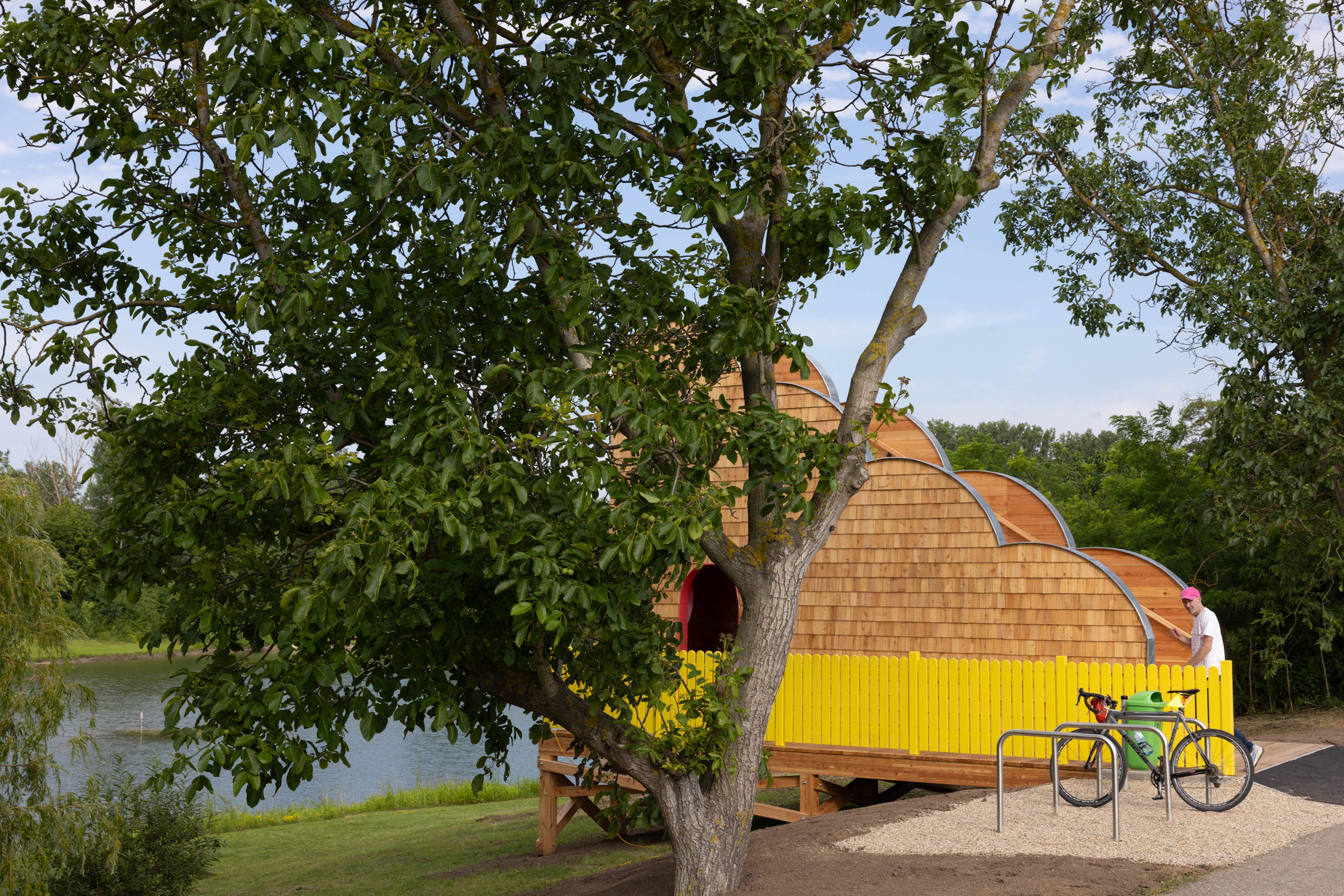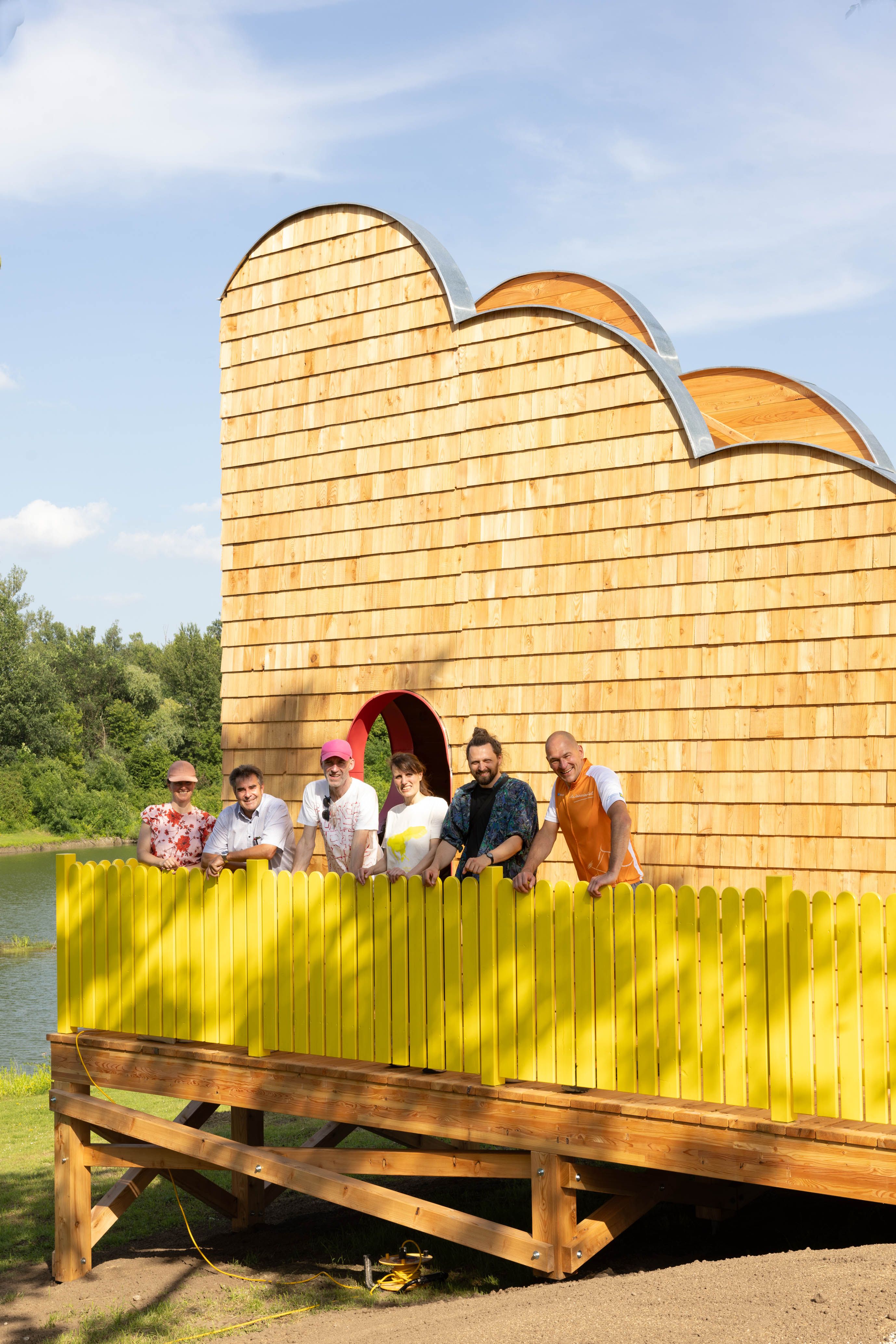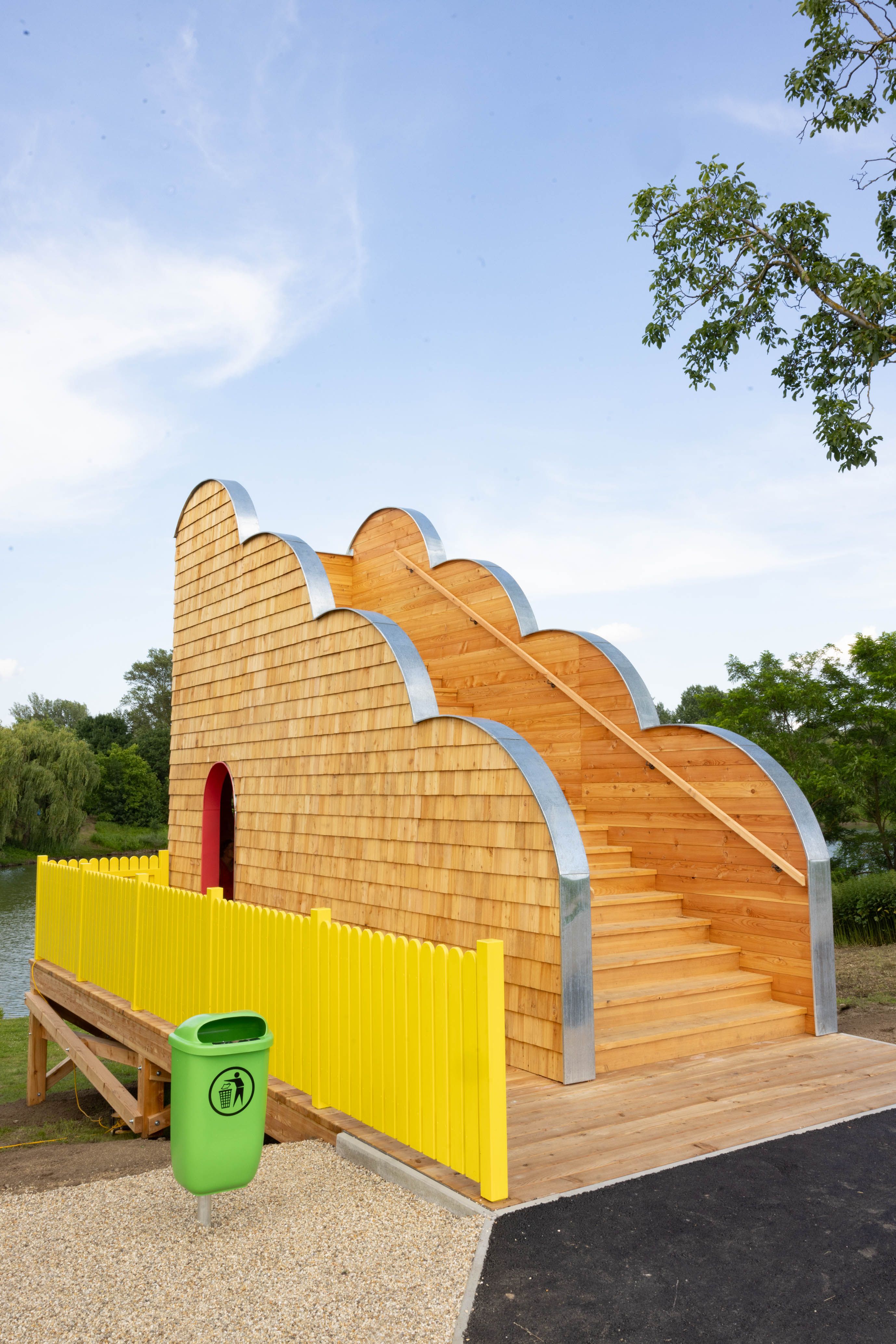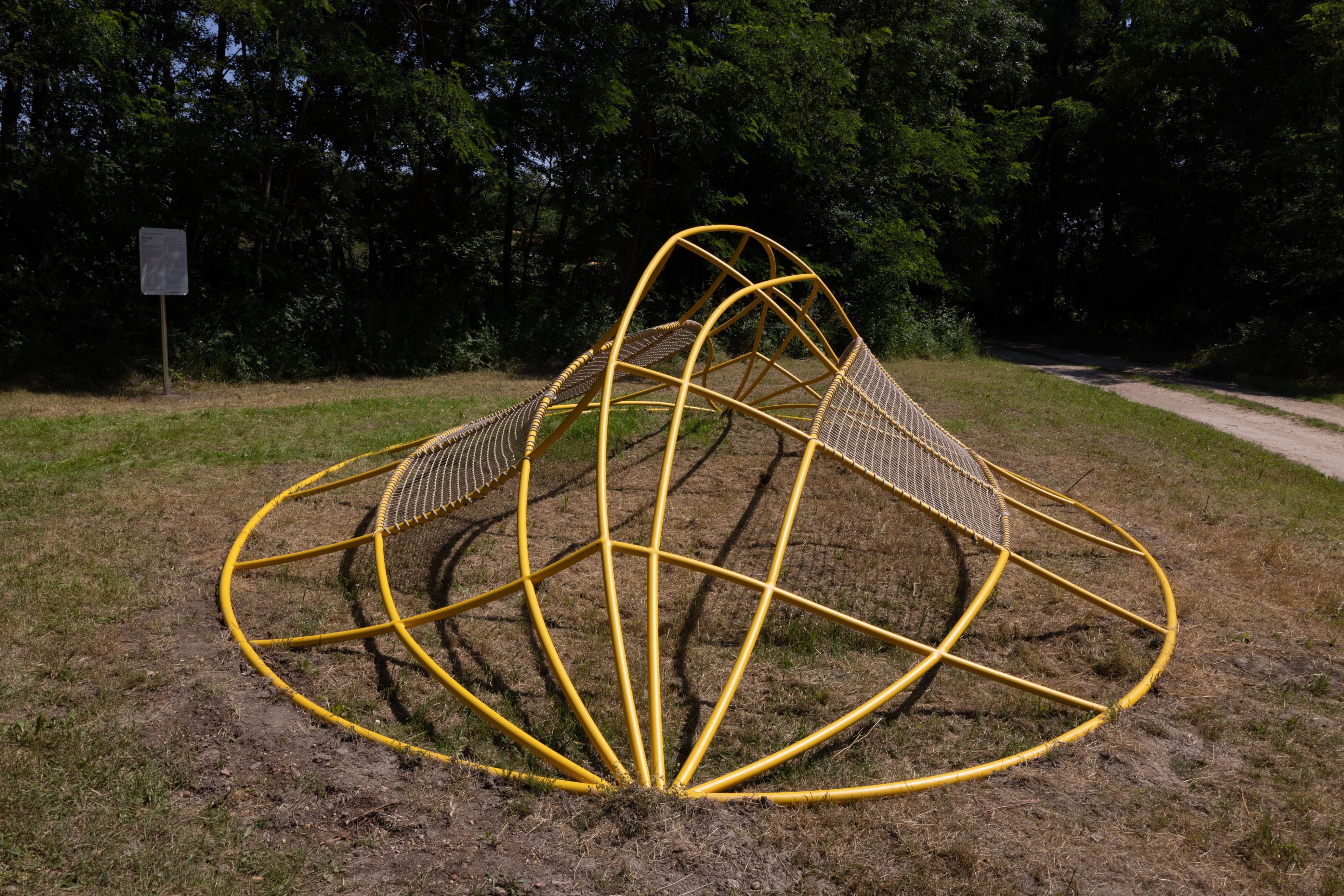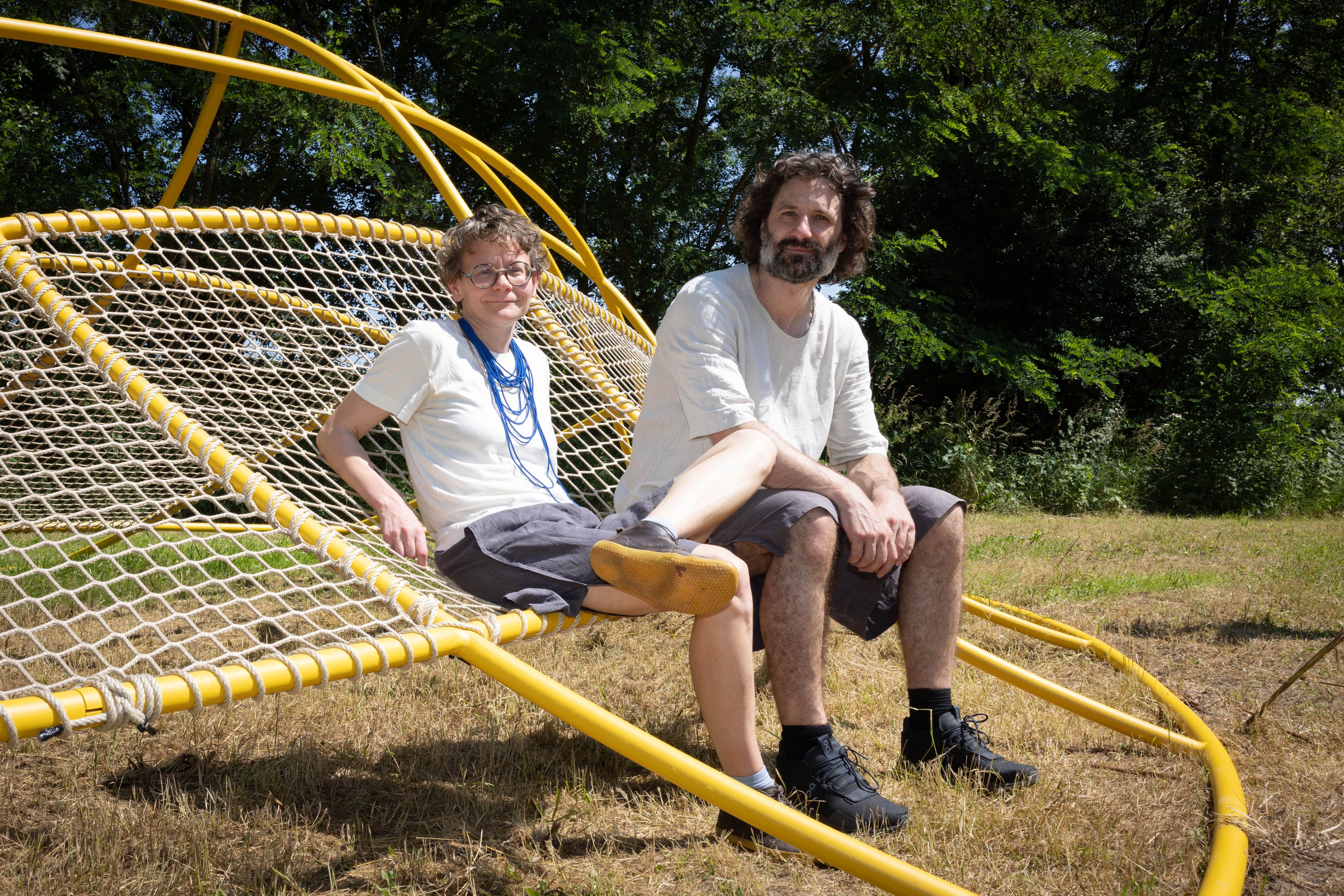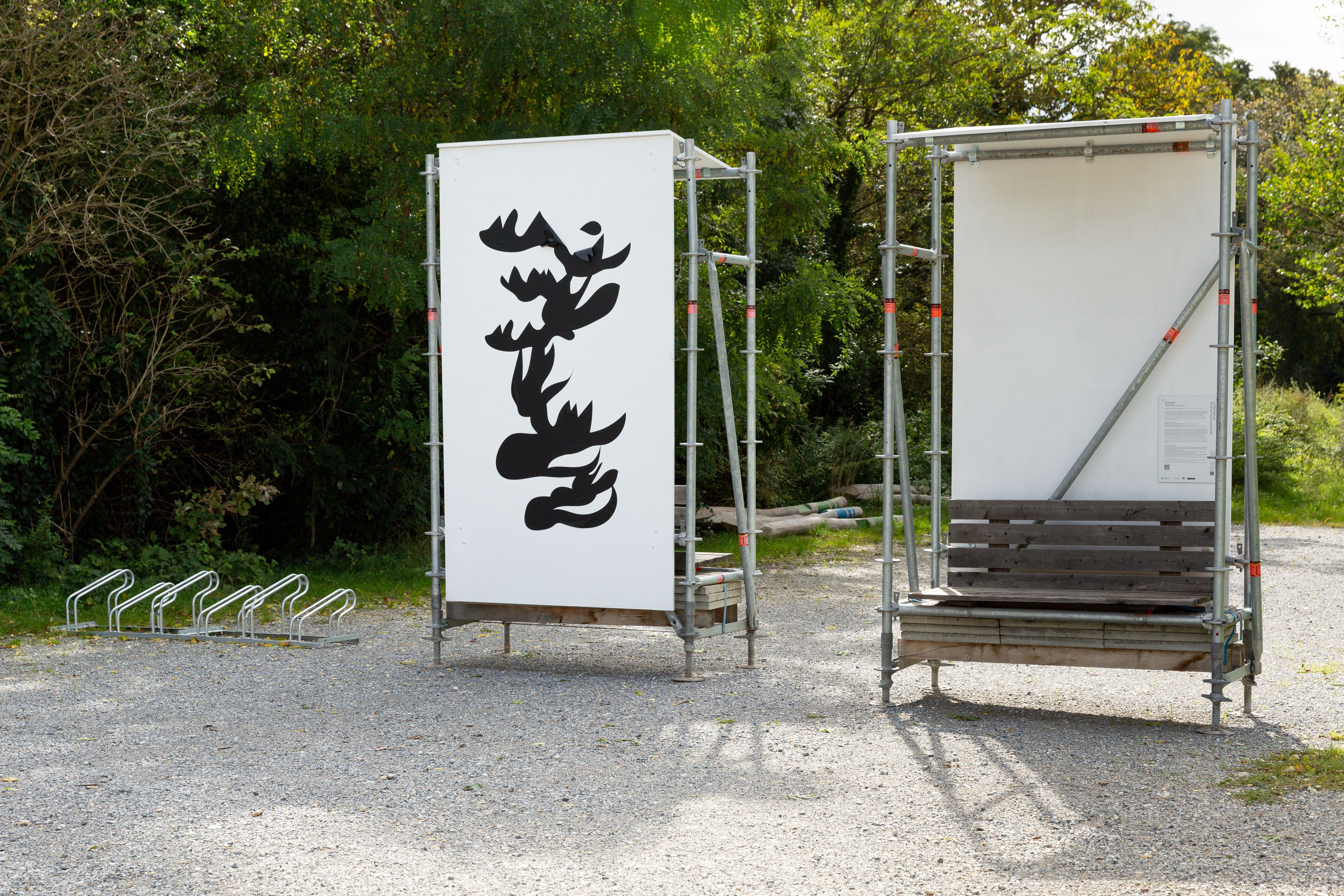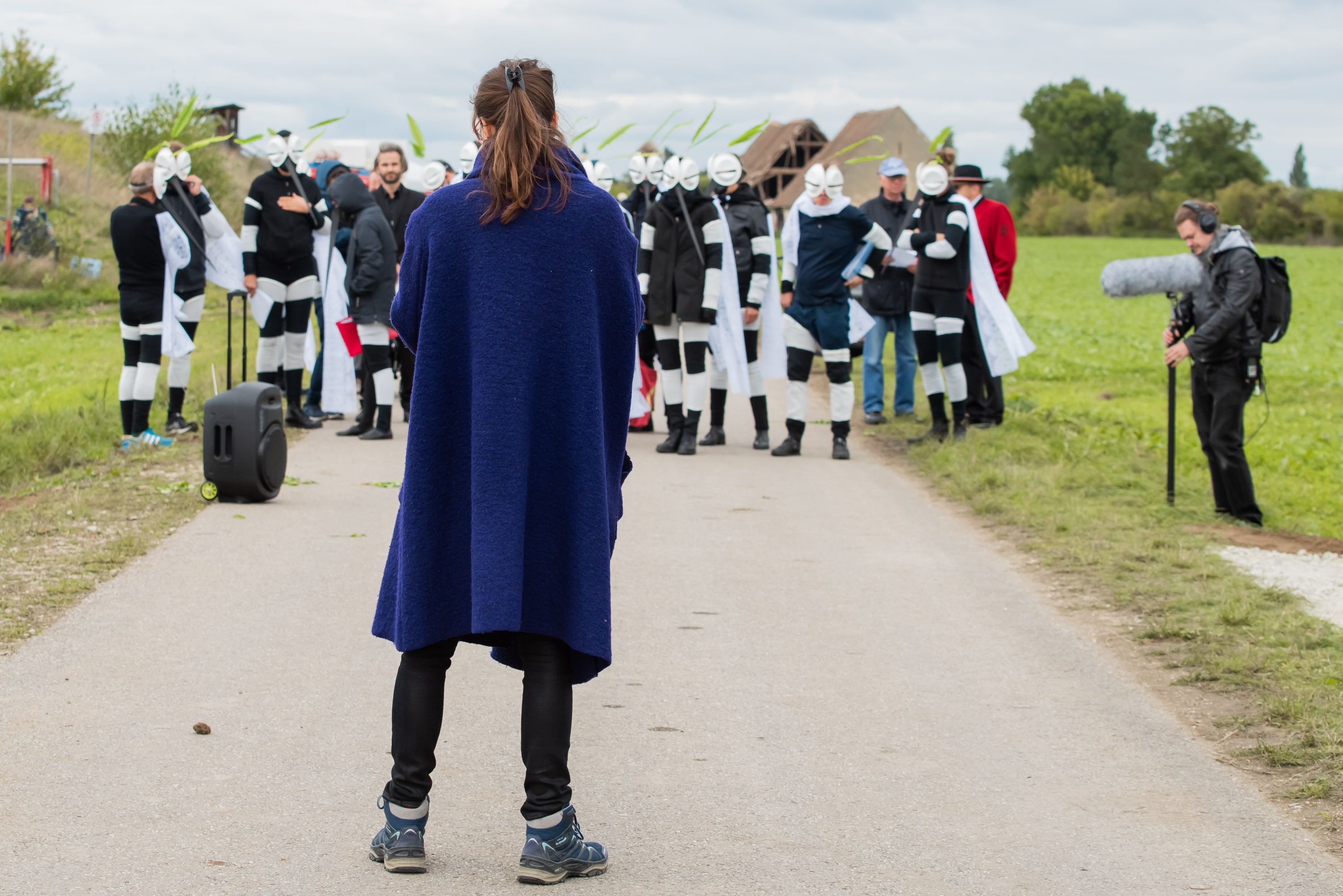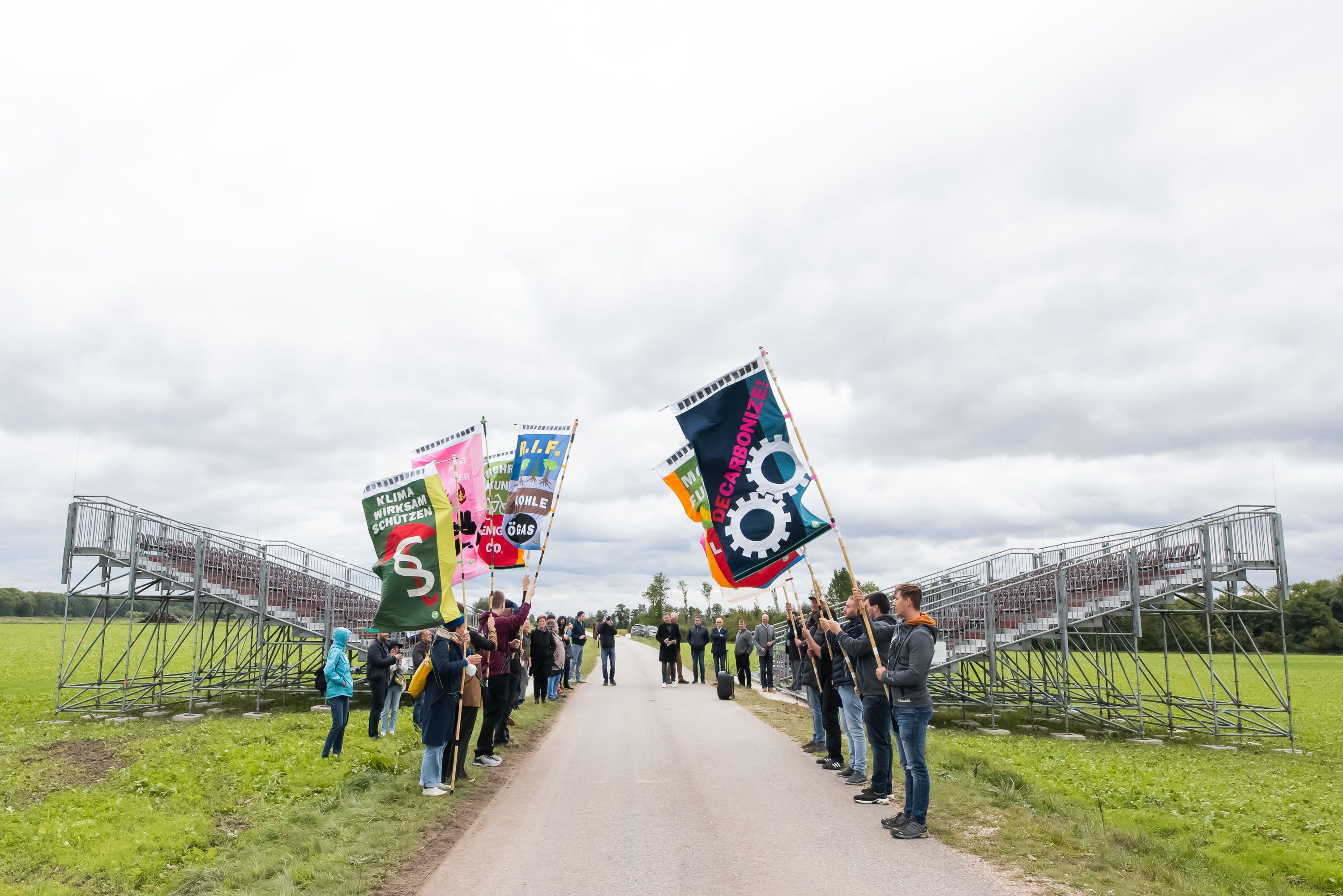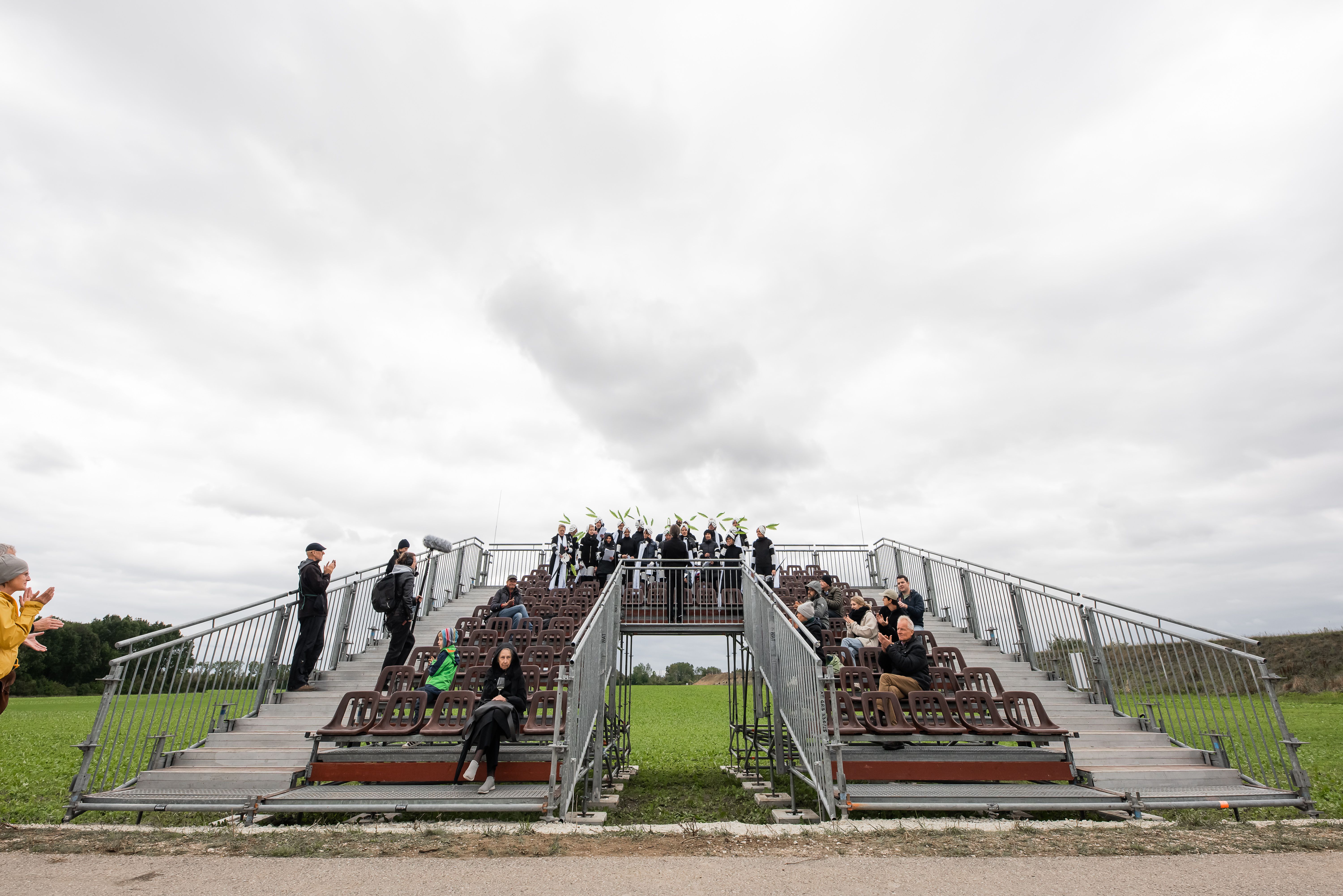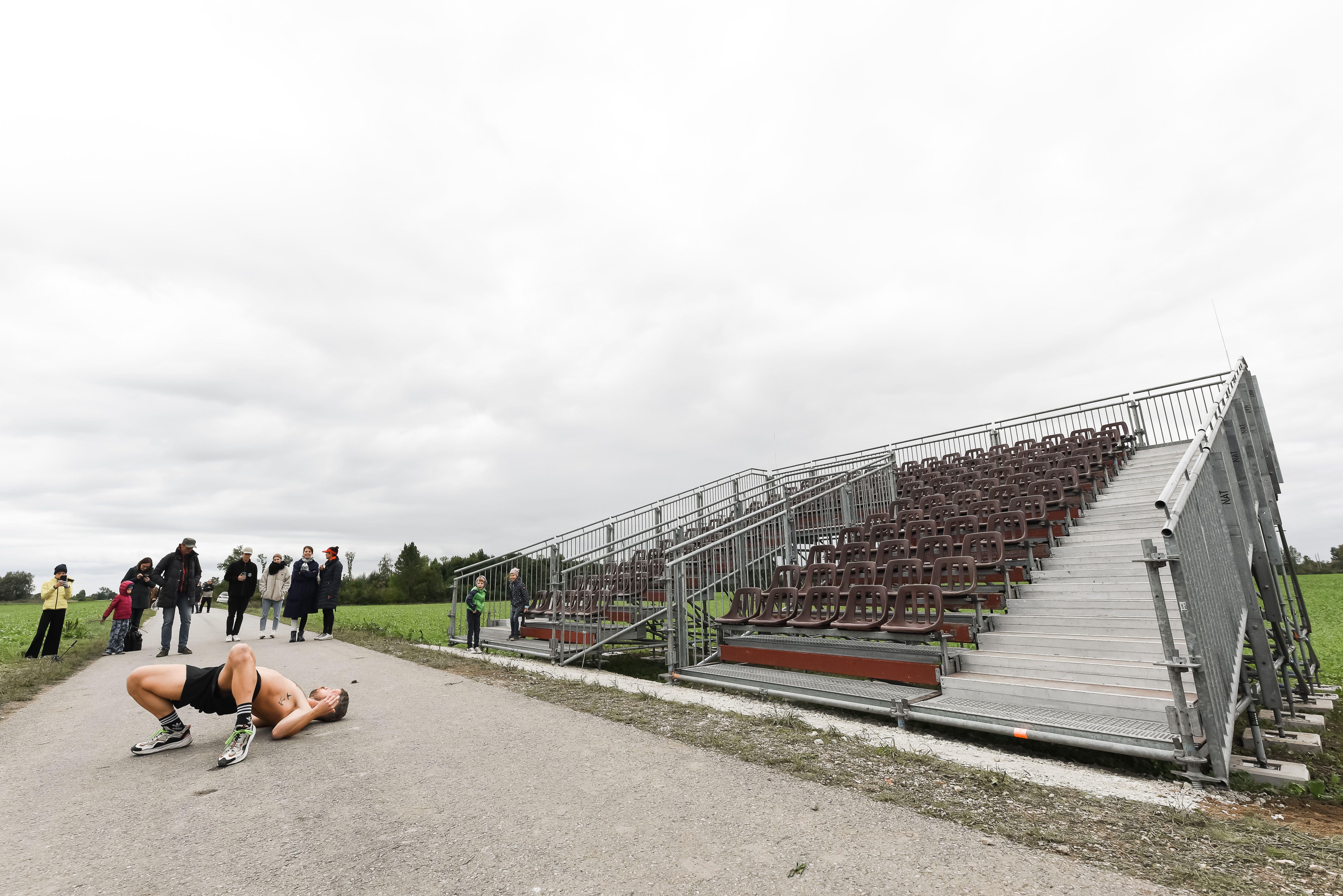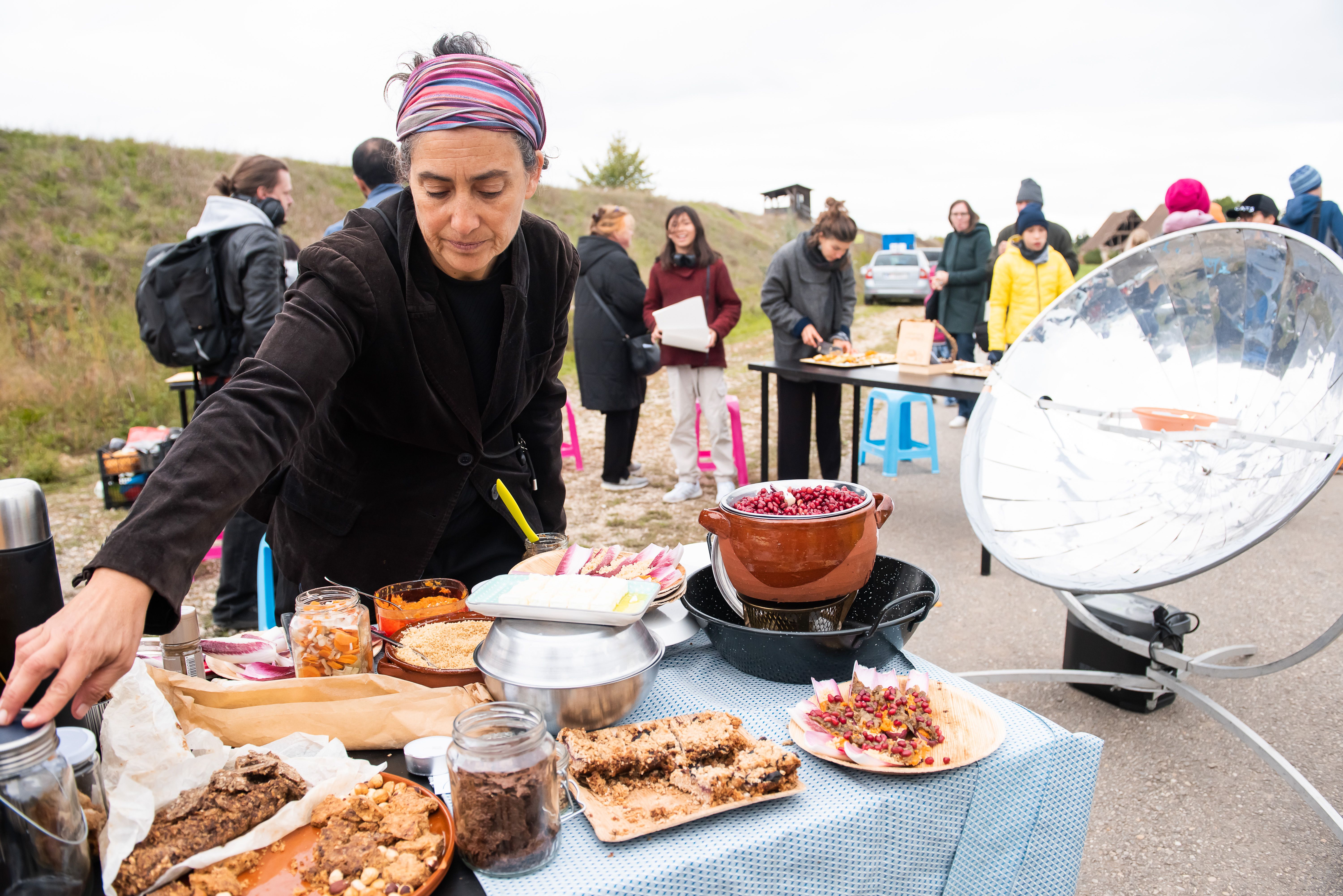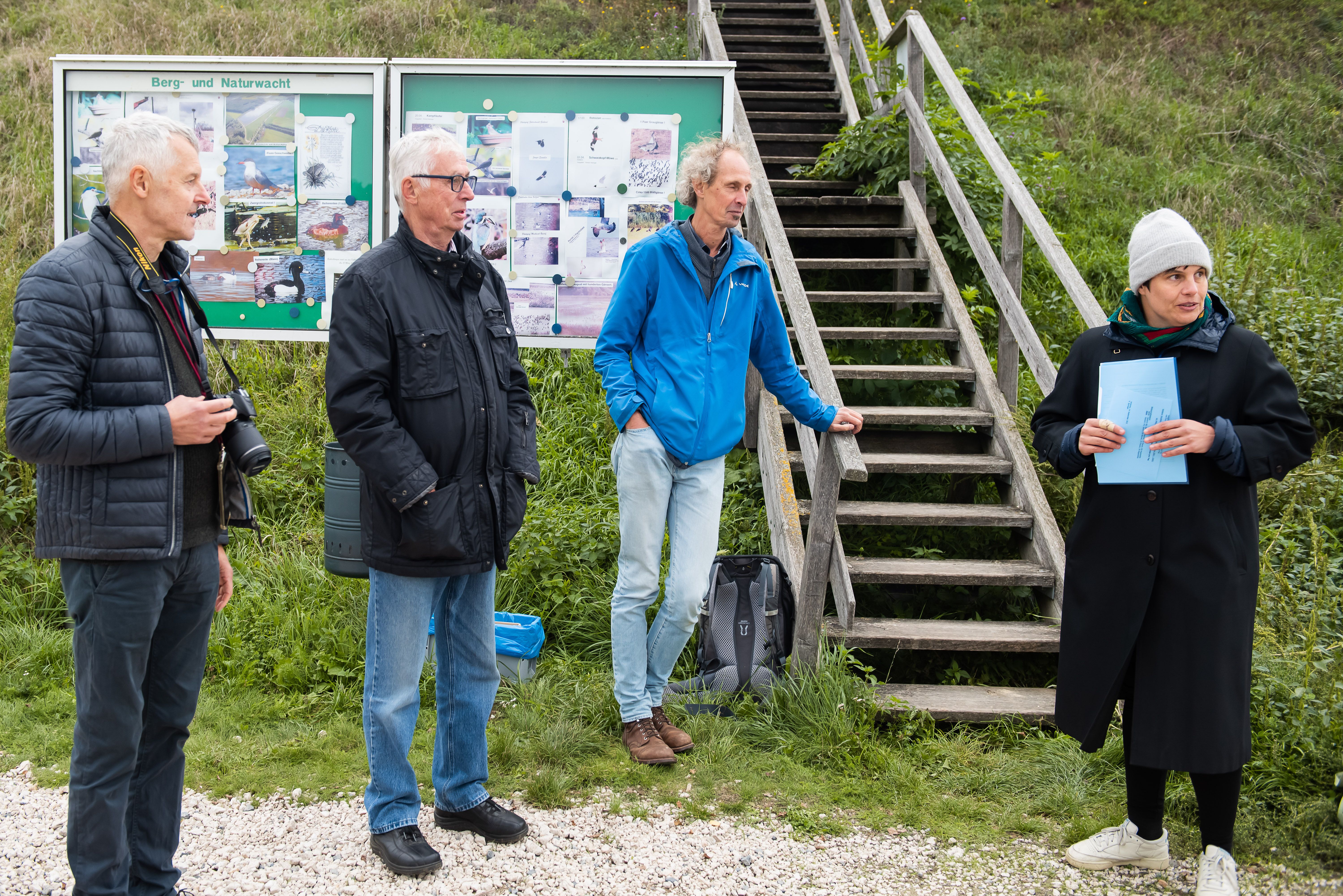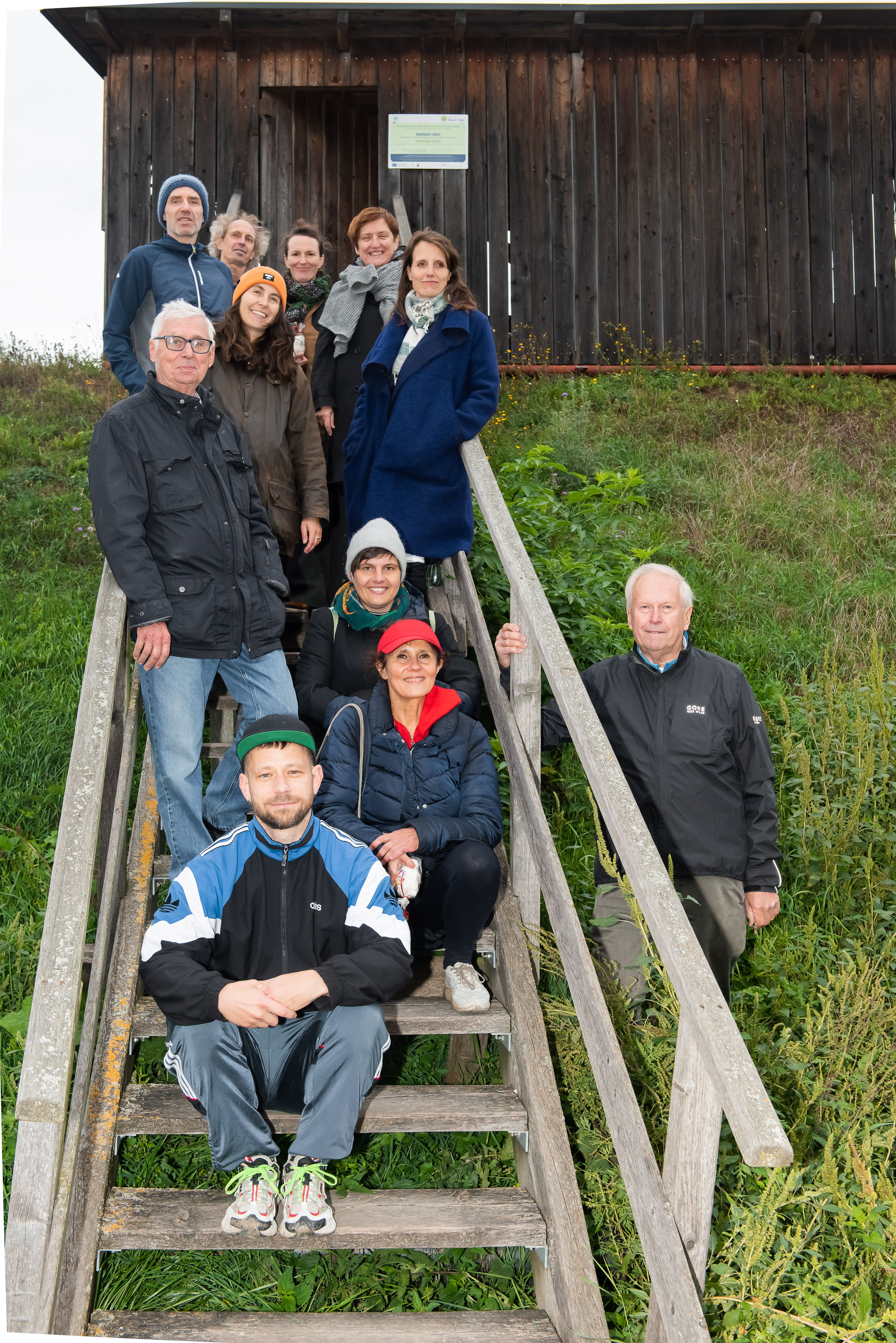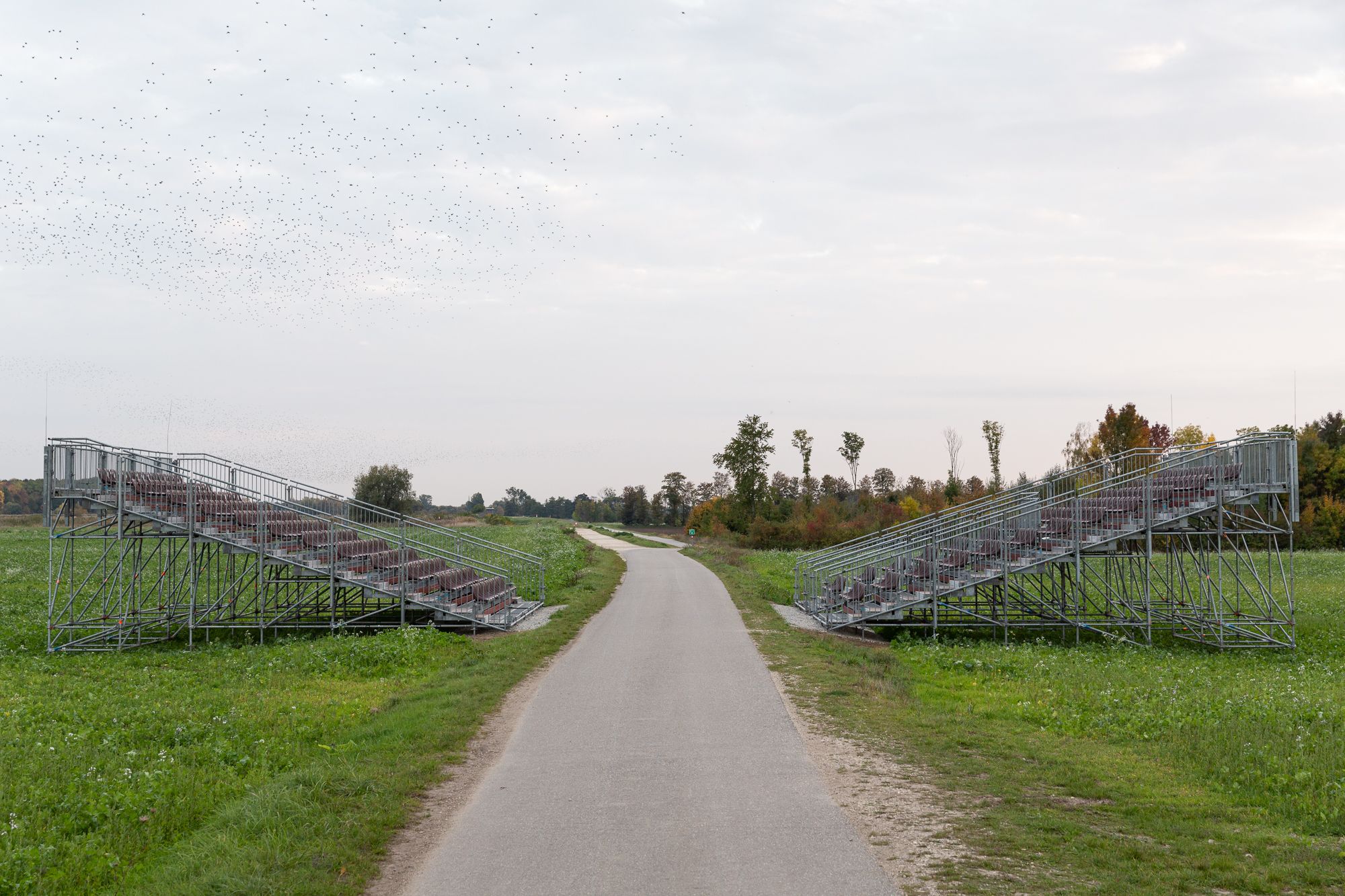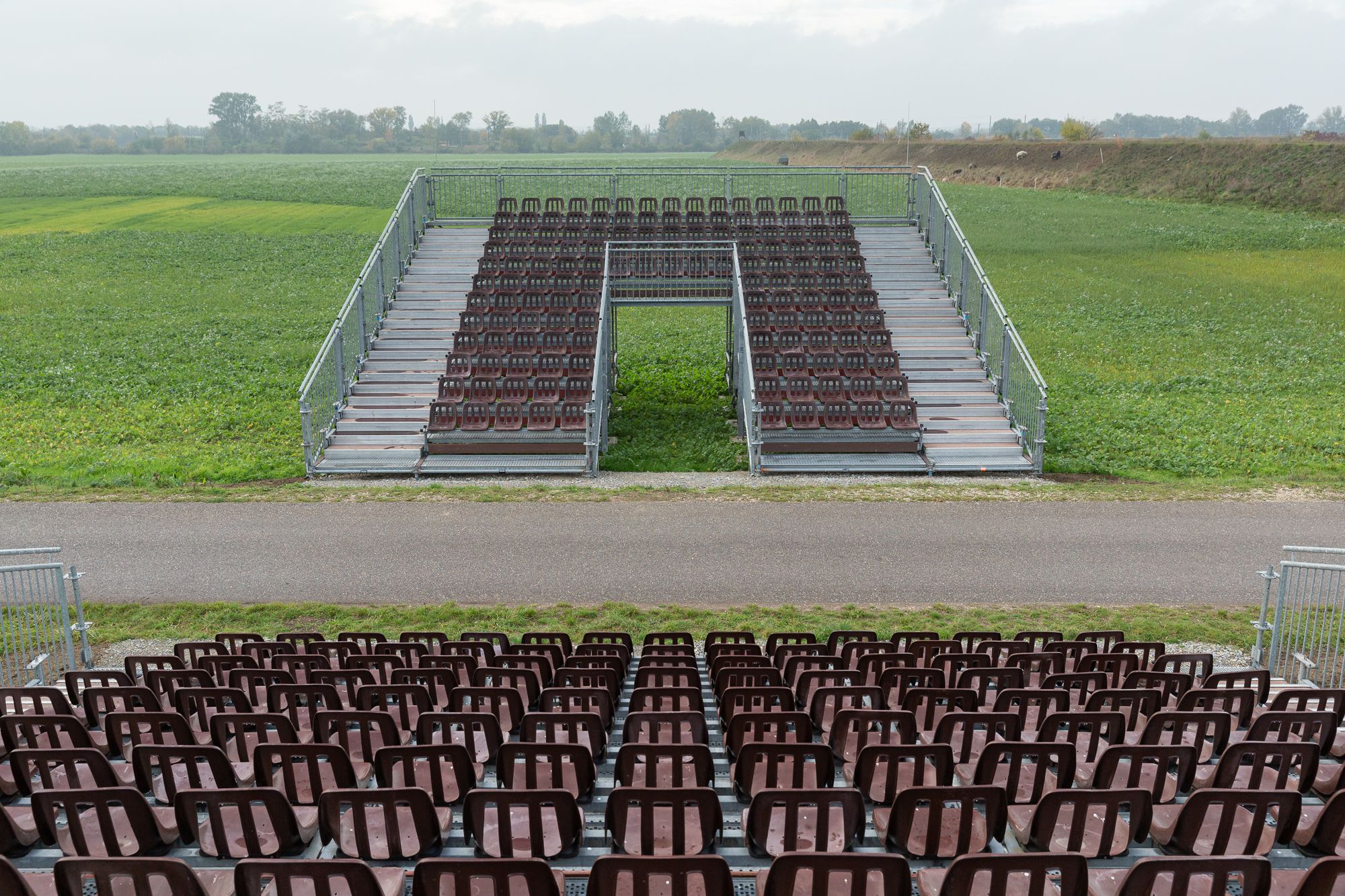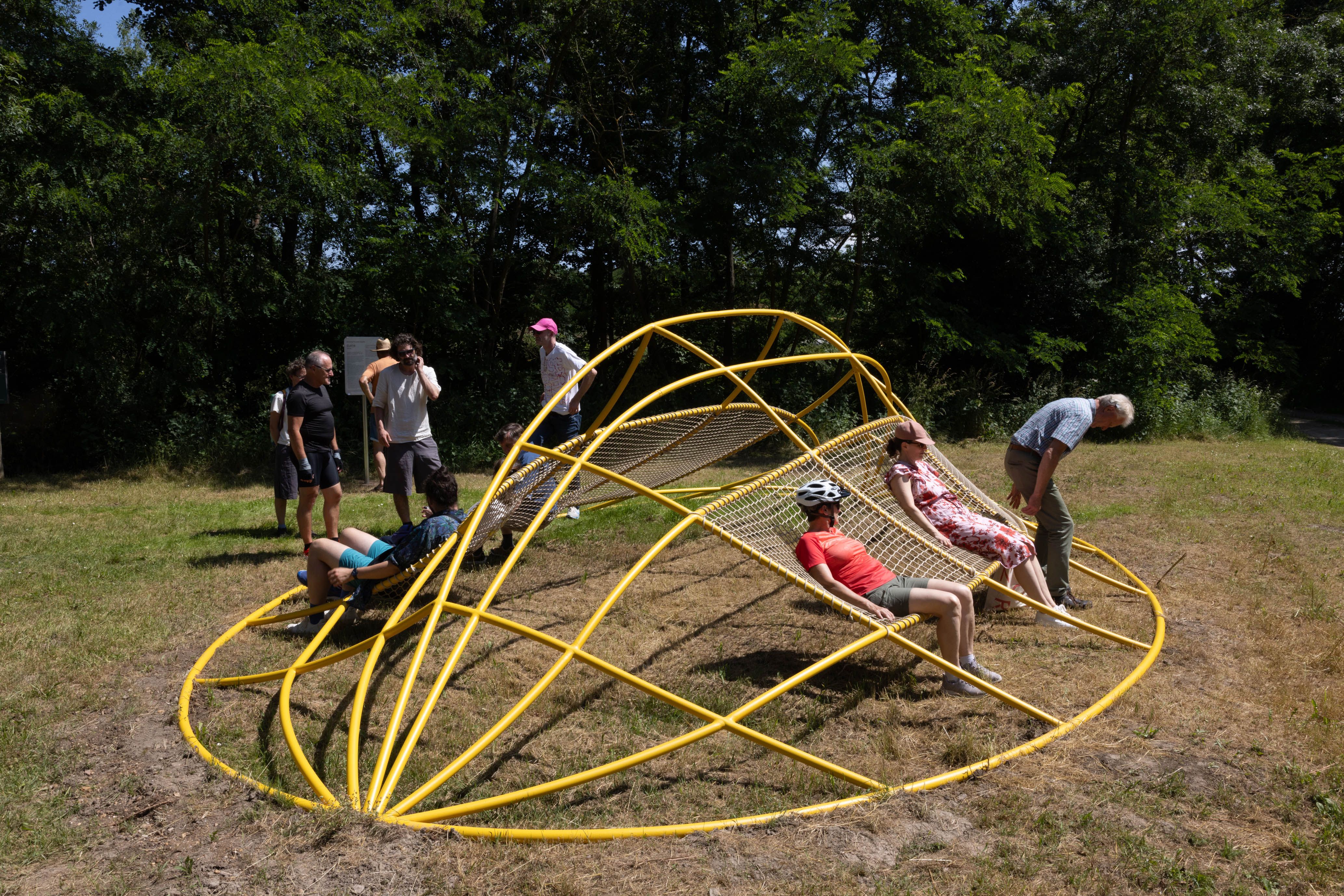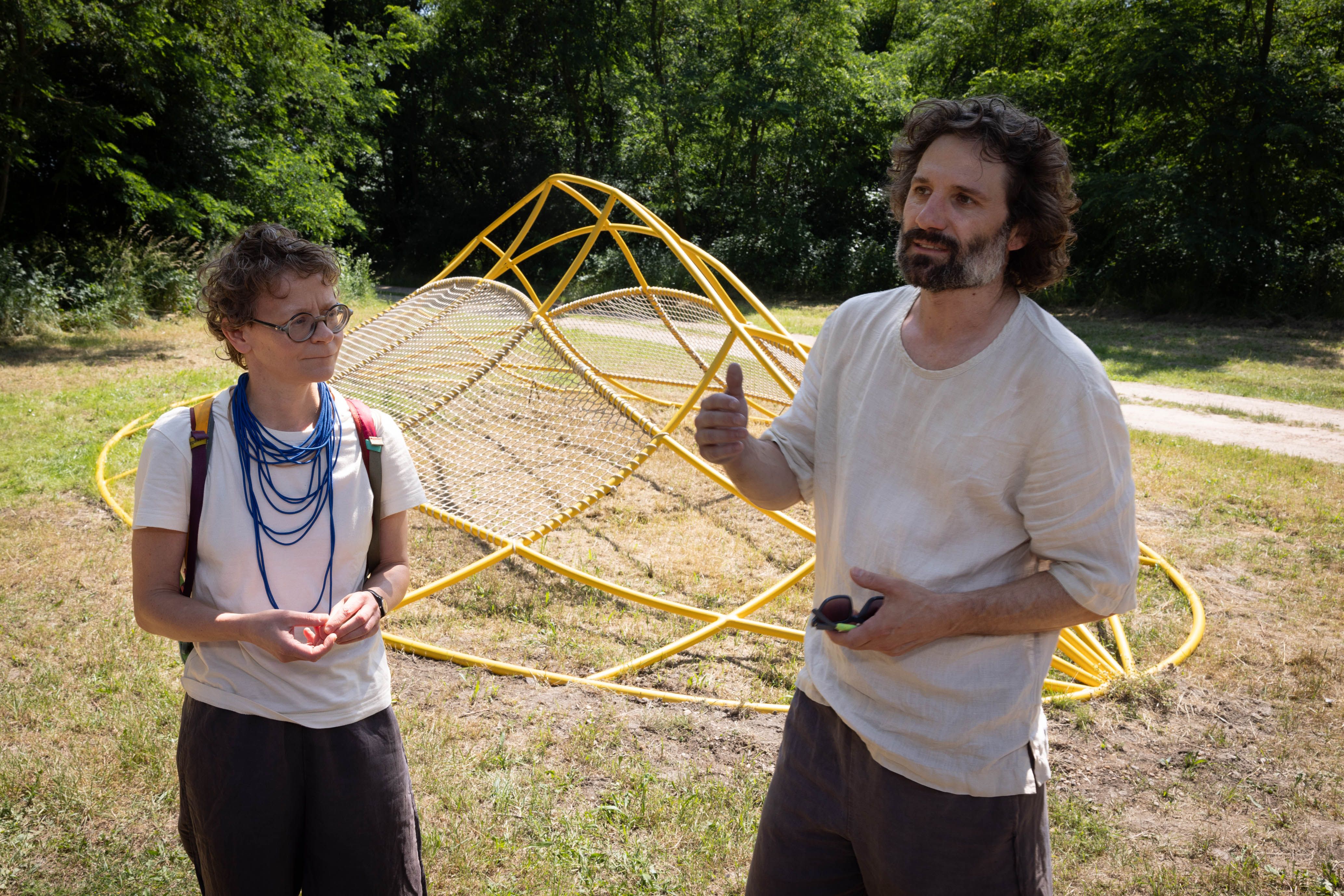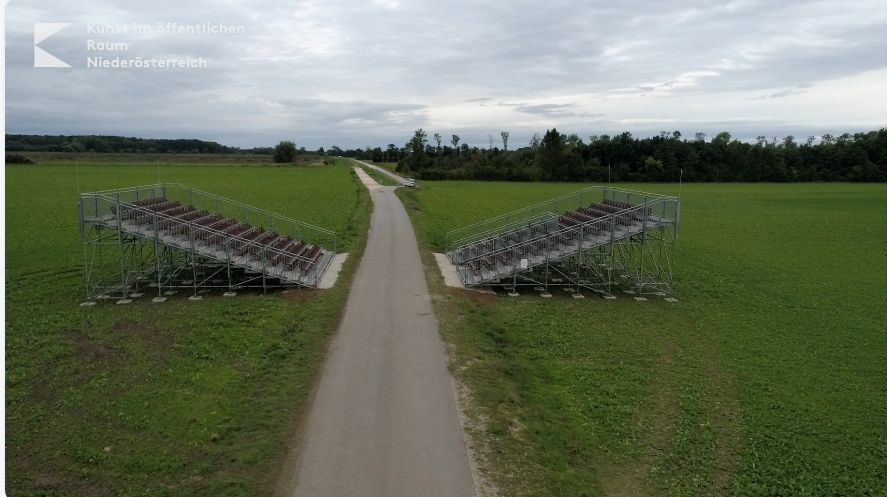SUPER NATUR
BackArtists
- With
Information
Art on the Iron Curtain Trail, part 1
Between Marchegg and Hohenau an der March
“These are the times of urgencies that need stories!” (Donna Haraway)
Cooperation and collaboration are key concepts for the survival of humanity. Communal practices, care, appealing to a sense of solidarity, the reconfiguration of historical ideas, the exploration of the complexity of borders and how they can be overcome, our relationship to nature and to the virtual world, and alternative forms of mobility, like cycling: All of these themes and subjects can be found in the project SUPER NATURE, curated by Alexandra Berlinger, Ursula Maria Probst, and Martin Wagner. The first part of these artistic interventions on the Iron Curtain Trail was accompanied by the performance program FLUTEN (FLOODS/FLOODING) in Ringelsdorf-Niederabsdorf an der March.
On the occasion of the anniversary 100 Years of Lower Austria (2022), permanent and temporary art installations will be realized for the first time along the bike path EuroVelo 13/Iron Curtain Trail between Hohenau and Marchegg . These works will address nature and the ecological and economic history of this special area. The permanent projects will be supplemented by temporary interventions, augmented reality interactions, performances, activism, temporary artworks, workshops, and talks, all of which highlight multifaceted themes in the interaction between cycling, landscape, history, and art that is increasingly attractive for green policies.
The easternmost part of Lower Austria is defined by a unique natural landscape called the March wetlands. Local environmental initiatives have been fighting for this landscape for years, which also has a history as the border to the “East.” The so-called Iron Curtain, which primarily took the shape of a natural border in this region, not only dominated this area from 1955 to 1989; it also had a lasting impact on people’s lives and on the landscape. It was a painful experience for the inhabitants on either side and influenced the local flora and fauna.
Our perception of the world is defined by our experience of borders and overcoming them. This is exacerbated by such effects as the war in Ukraine currently raging in Europe. In order to intensify the idea of community and transcultural exchange along the border landscape between Austria and Slovakia, a bilateral bicycle performance by art students from Bratislava and Vienna took place in June 2022 under the name Tour d’ICT as a prologue to the project.
In art as in the research of borders and critical spatial practices of the distribution of resources, there is a long history of using the transformative power and production of alternative imaginations as a way to give lived reality, the perception of borders, and what is defined by them a new shape. For this reason, we are also interested in the question of how augmented reality and fictionality can be used for processes of movement in “border landscapes.”
In traumatic times such as ours, in which reality distorts itself, becoming aware that the so-called real is not authentic means reinterpreting this reality.
With local conditions in mind, we explore the term “intra-action,” which was coined by the physicist Karen Barad for mutually connected actors from the world of animals, humans, and plants, while also taking inspiration from the performingborders platform and Topological Atlas. In short, in contrast to Bruno Latour’s actor-network theory and Donna Haraway’s idea of “situated knowledge,” “intra-action” can be described as the mutually influencing quality of the intertwined agency of matter. In a conversation with artists and with those people who are affected, we will research the production of visual, acoustic, performative, and palpable counter-geographies of borders that also leave room for the experience of what has not been documented so far.
SUPER NATURE deals with the multifaceted complexity of borders, which ranges from geopolitical, economic, and ecological factors, to social practice, cultural production, and the natural environment along the border and beyond it—not to mention the aspects of “radical care” that go hand-in-hand with climate protection in a currently changing, global political context.
FLUTEN (the flood), the title of the performance program on the occasion of the opening of SUPER NATUR, 2022, acts as a metaphor for how fixed borders can be changed and overcome through art and collaborative cultural work.
Contributors
- Kuration
Contributions
Mischer’Traxler
duene (dune), 2024 (permanent)

In Drösing, the unique surroundings provided the impuls for the design. The rest area translates the nearby (former) sand dune landscape into a metal and mesh structure. Before the pine trees were planted, the strong wind constantly changed the sandy landscape: forming hills and then blowing them away again. The design studio has adopted the shape of the dunes in a playful and plausible way and “converted” them into hammocks and bicycle stands.
Sascha Henken (Kollektiv Plus X), Stefanie Rittler
Pier 1/2, 2024 (permanent)
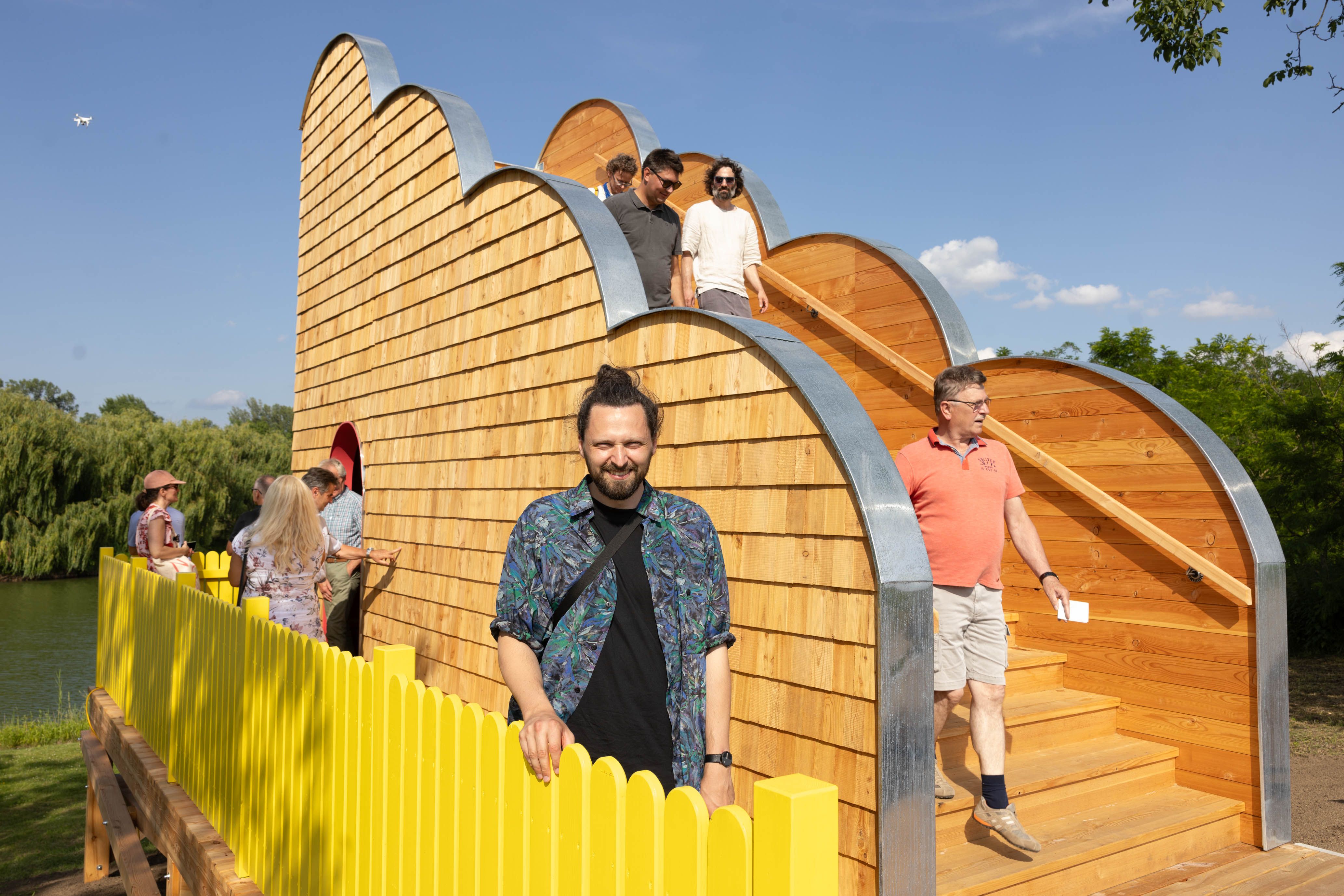
In Angern an der March, Pier 1/2 takes a no less significant approach to his location. The architectural object, a half cloud-shaped staircase, a mixture of tower, grandstand and shelter, clad in wooden shingles, is an original take on the elevated location by the bathing pond. Pier ½ offers a view over the biotope and March into Slovakia, on the other side of the former Iron Curtain - as a symbolic remnant of a former bridge.
On the opening day, June 8, 2024, in the pier ½:
reliéf Relief / 16mm / sound / 2023 / 9 min
A film by Johannes Gierlinger & Mira Klug
Soundmix by Samuel Klug; music by Frank Rottmann;
Distributed by: Lemonade Films

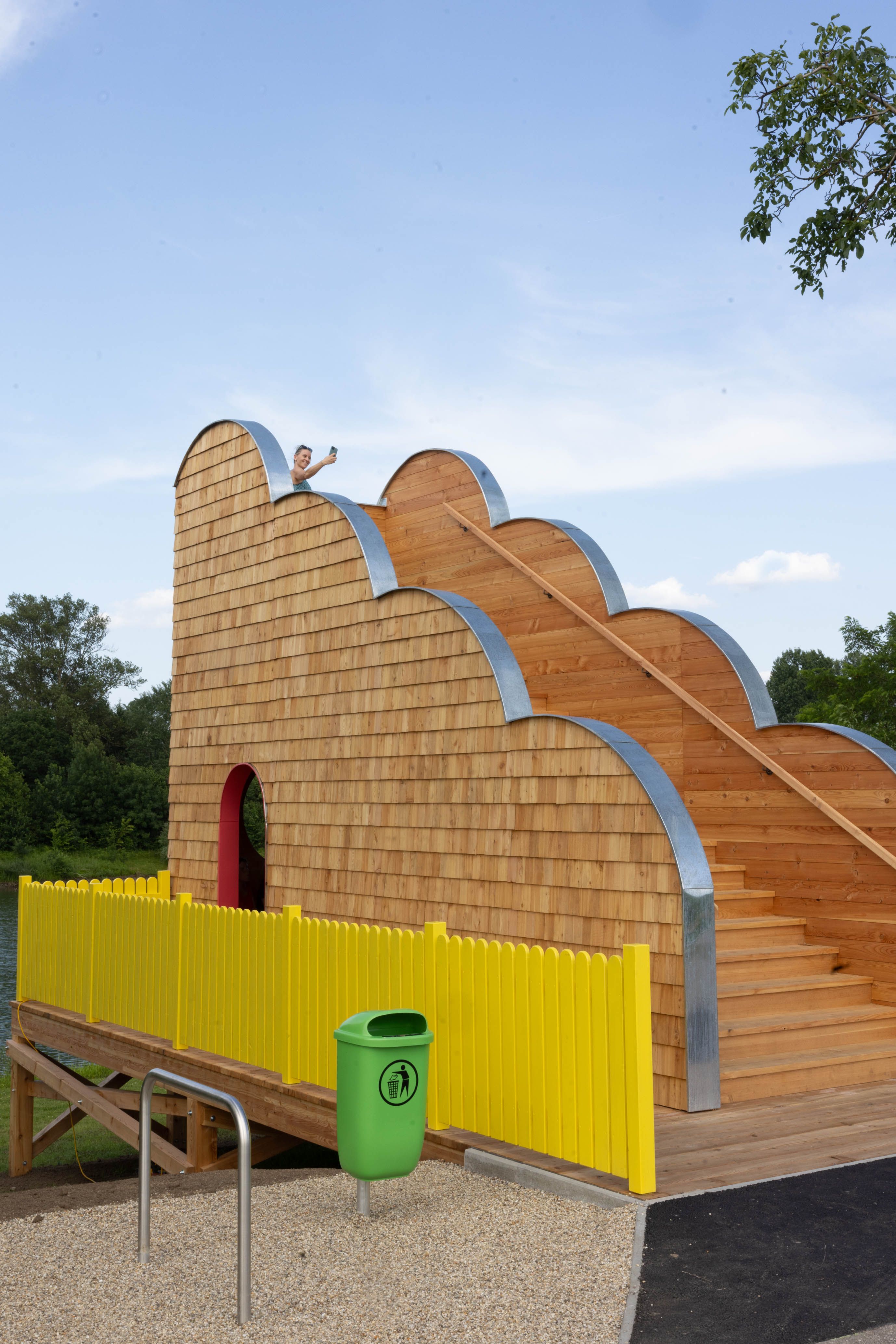
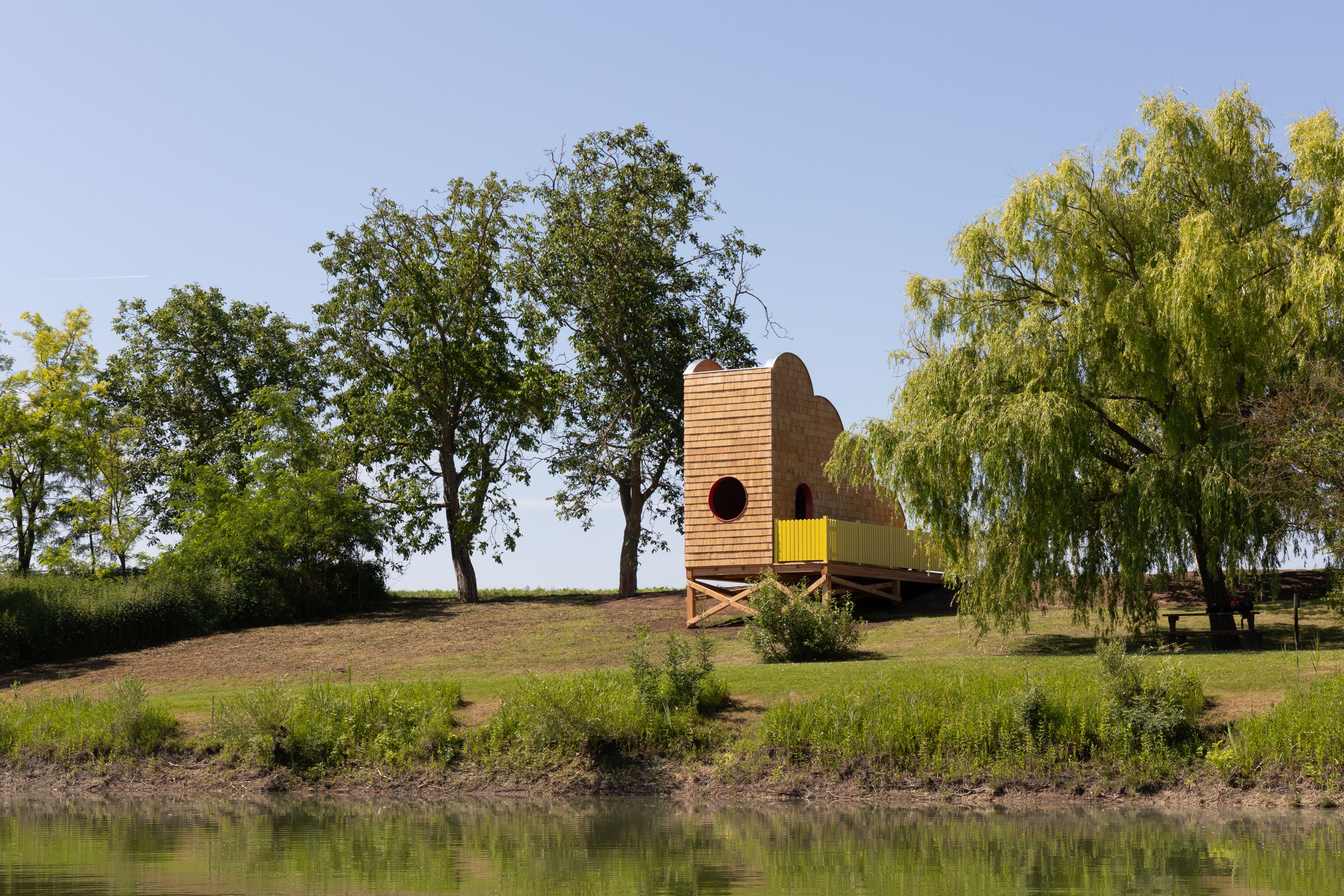
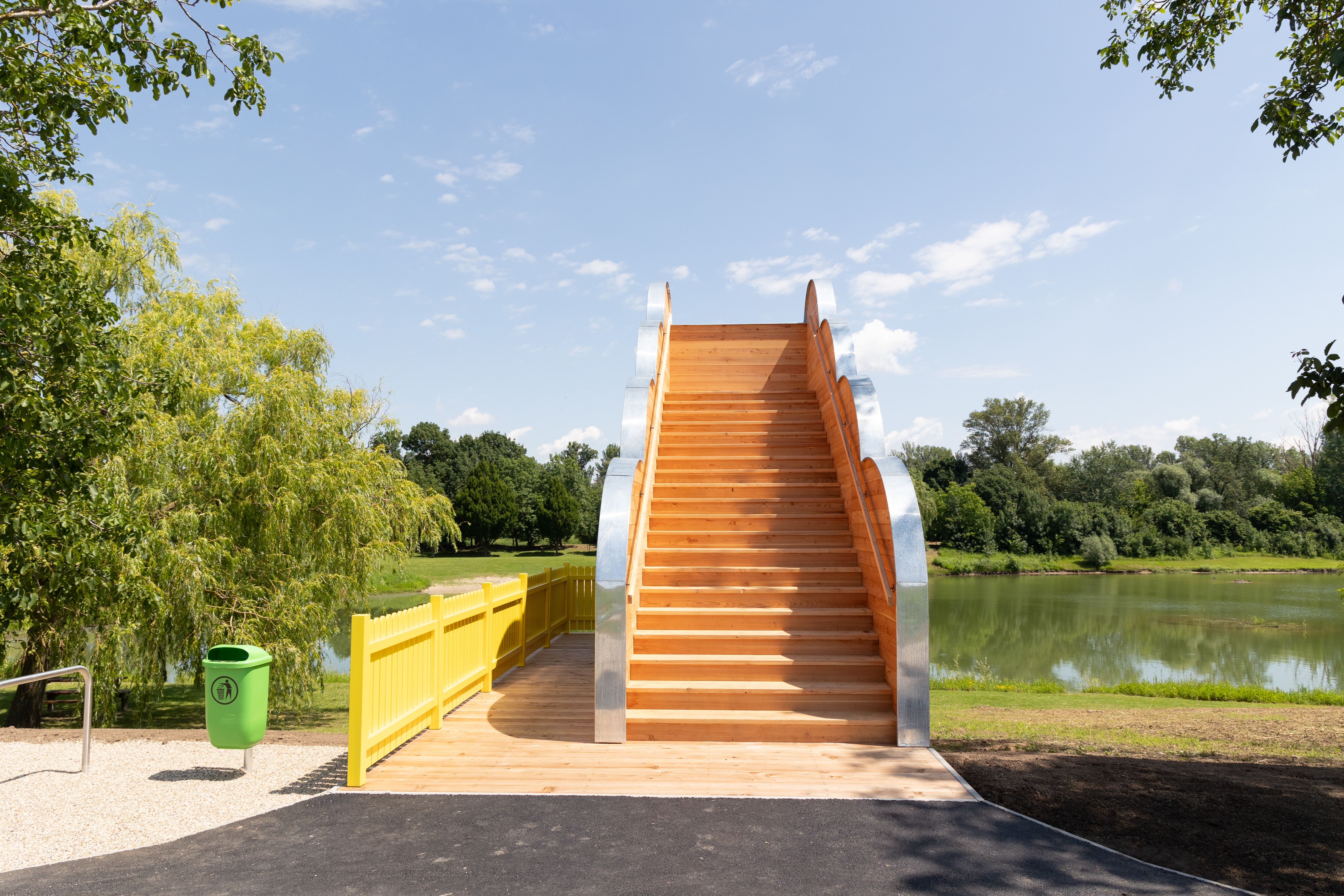
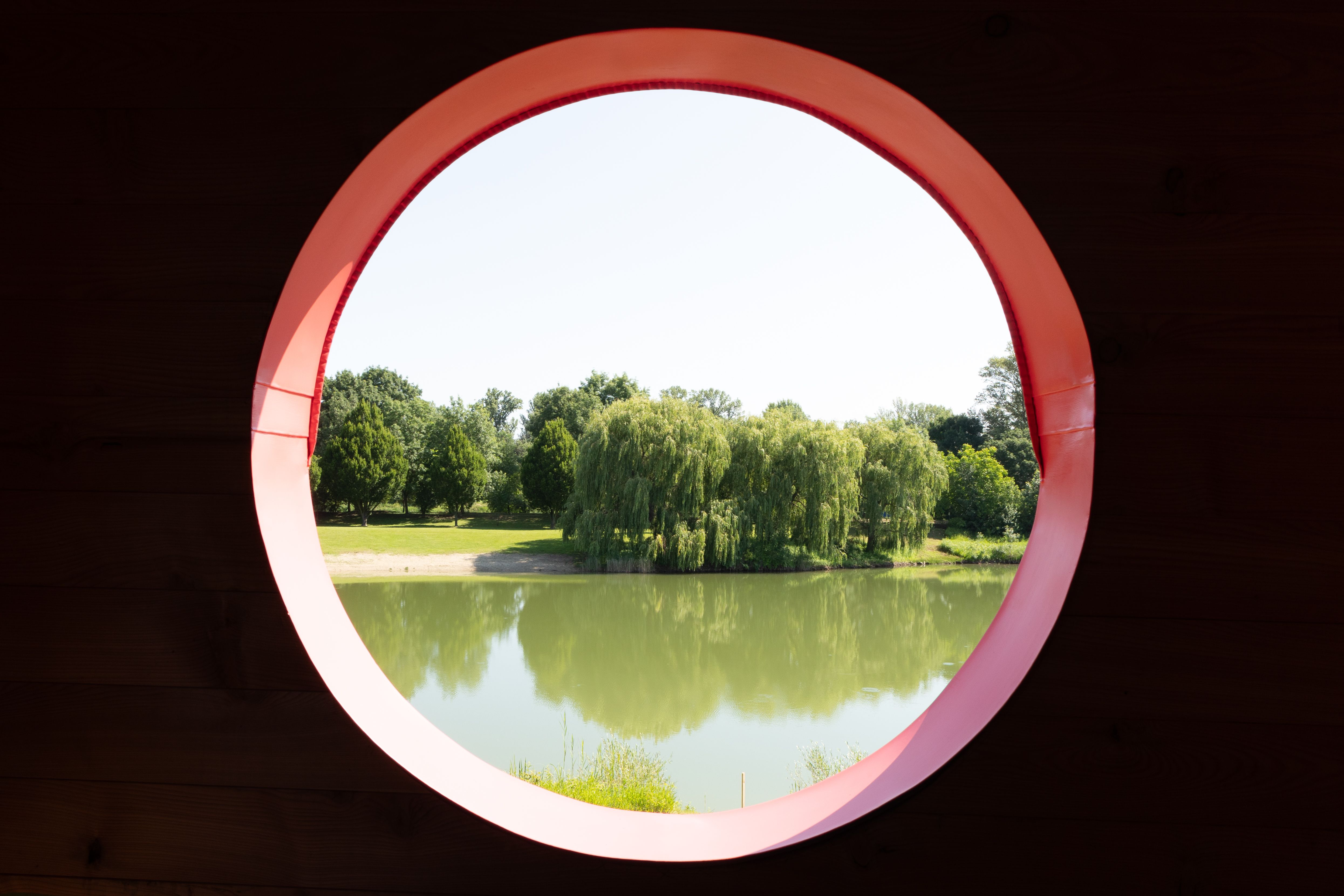
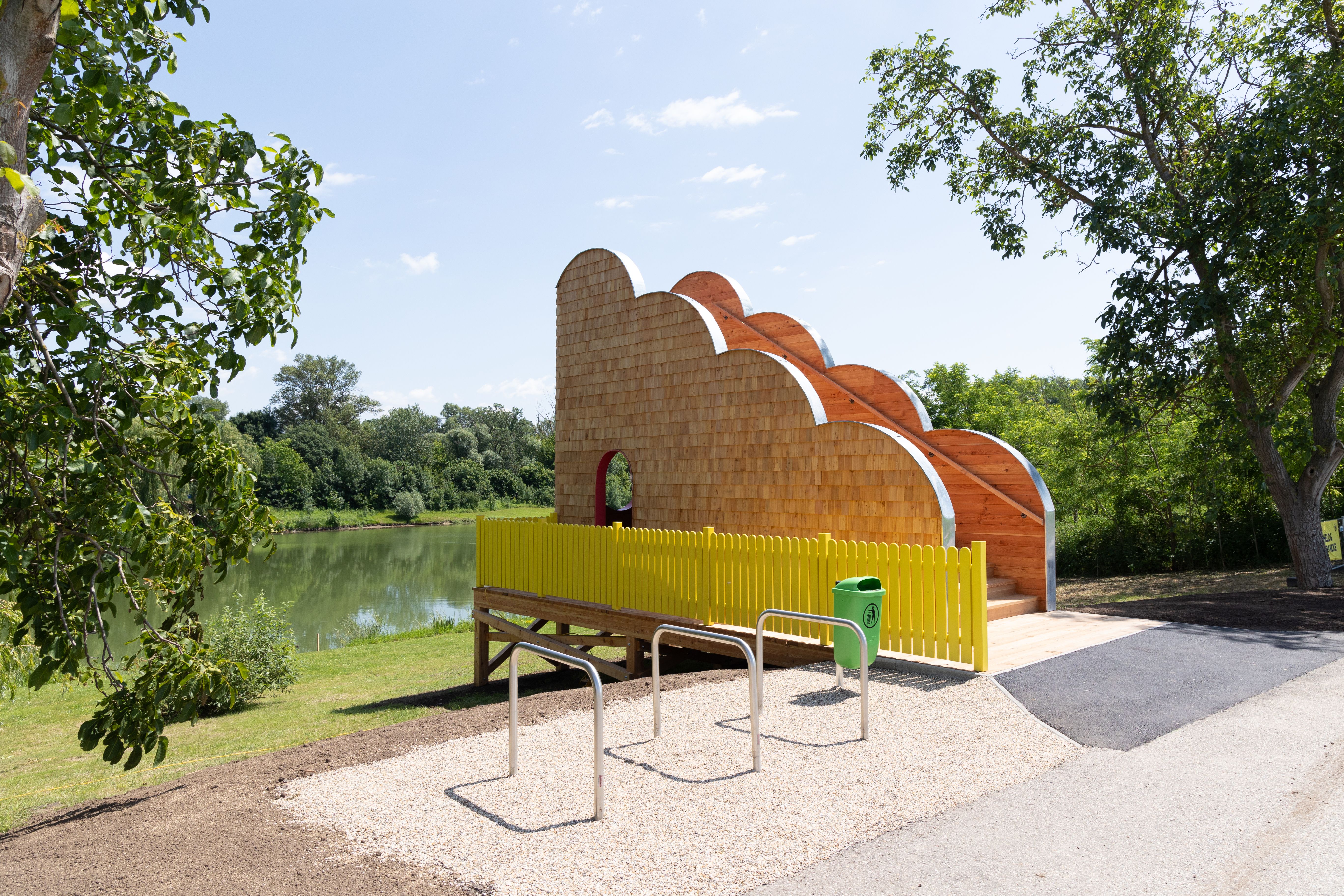
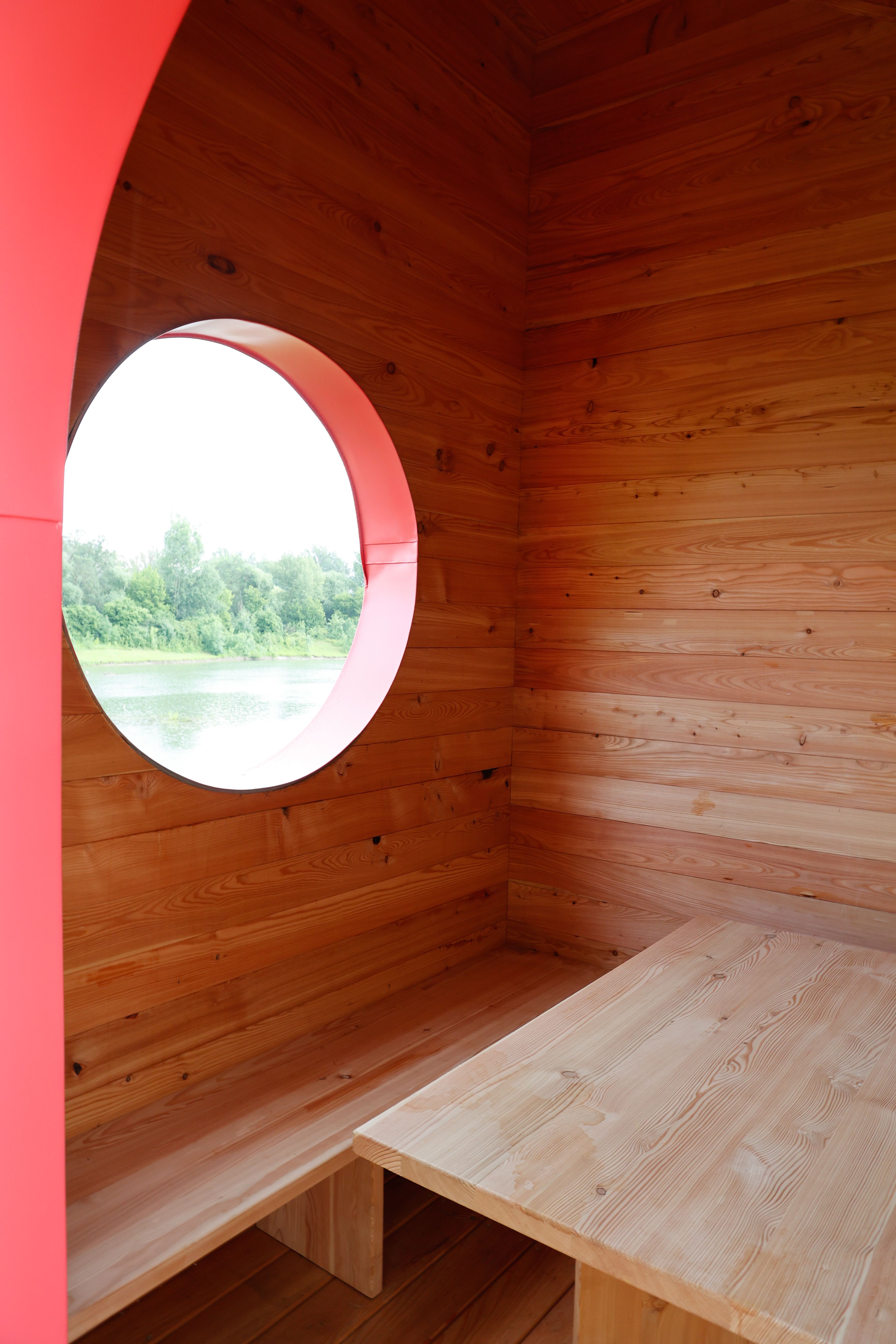
Katrin Hornek
Postindustrial Creatures, 2023 (terminated)
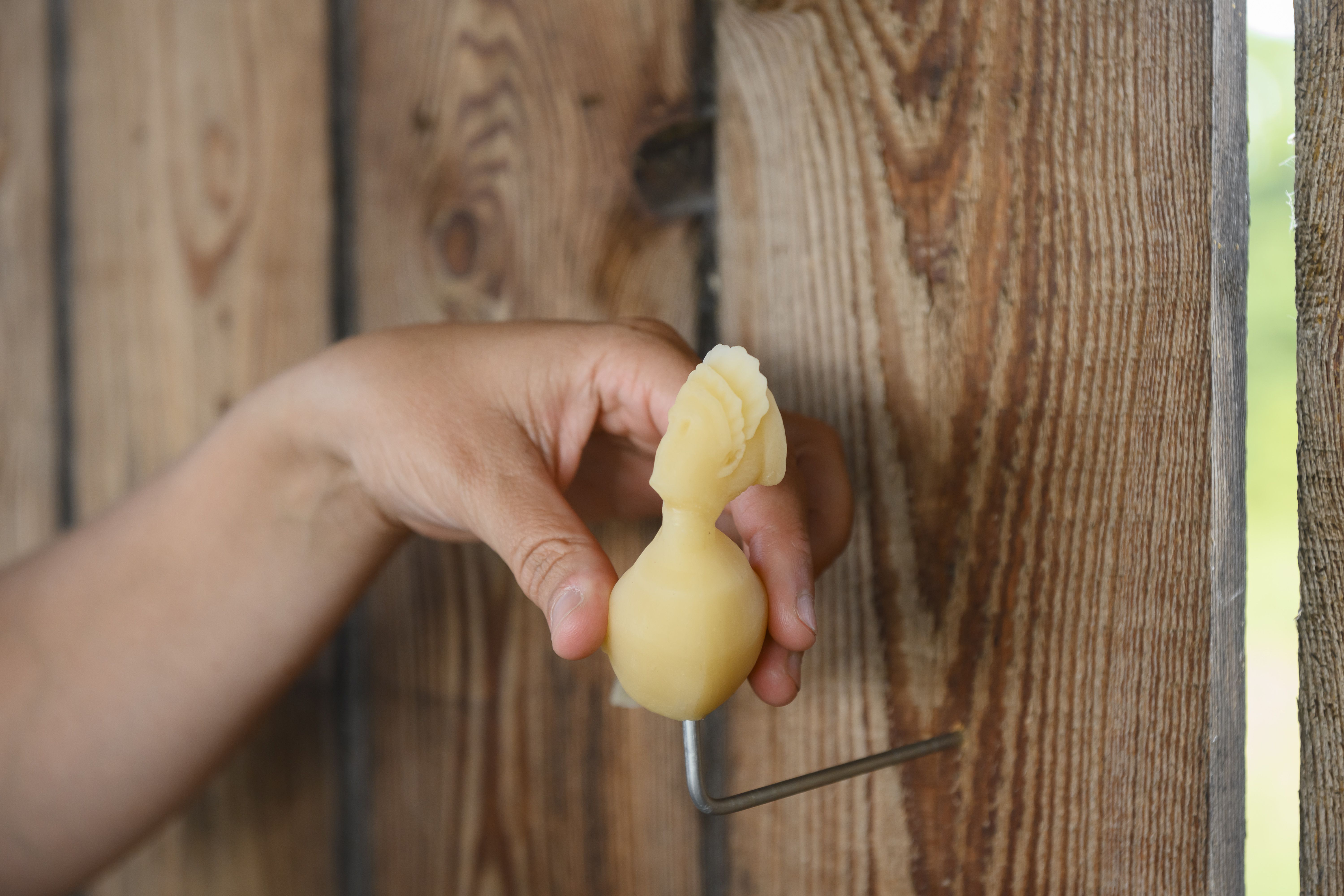
After having been vandalized repeatedly the installation was taken down and isn't on display any longer.
For her artistic project that will be realized in 2023, Katrin Hornek will be transforming a bird watching station (a vogel.schau.platz) in Hohenau into an installation that lets visitors become part of a postindustrial landscape.
The most important types of local migratory birds will be featured as edible forms made of sugar, the basic material of which was manufactured at the former sugar factory in town (1867–2006). The factory had a lasting impact on the entire landscape and its ecosystem through the tons of sugar beet sludge that was a byproduct of the sugar manufacturing process. Over time, Hohenau became one of the most important international stopover sites for migratory birds in Austria because of the sludge basins. Since the factory closed in 2006, an attempt has been made to imitate the water cycle of sugar production in order to protect the artificial landscape and its newly created postindustrial life. Natural processes as well as the high water dynamics of the formerly uncontrolled flow of the March River are also being simulated.
As a starting point for this growing installation, the first migratory birds made of sugar will be handed out to visitors as a gesture in September 2022. (Katrin Hornek/Larry 3000)
Technical assistant: Bruno Szenk
Many thanks to the AURING Association (especially Ute Nüsken and Martin Rössler), Archiv 138 Jahre Zuckerfabrik (Archive 138 Years of the Sugar Factory) (especially Ernst Springer and Karl Schubtschik), and the Museum Hohenau an der March (especially Georg and Brigitte Semanek).

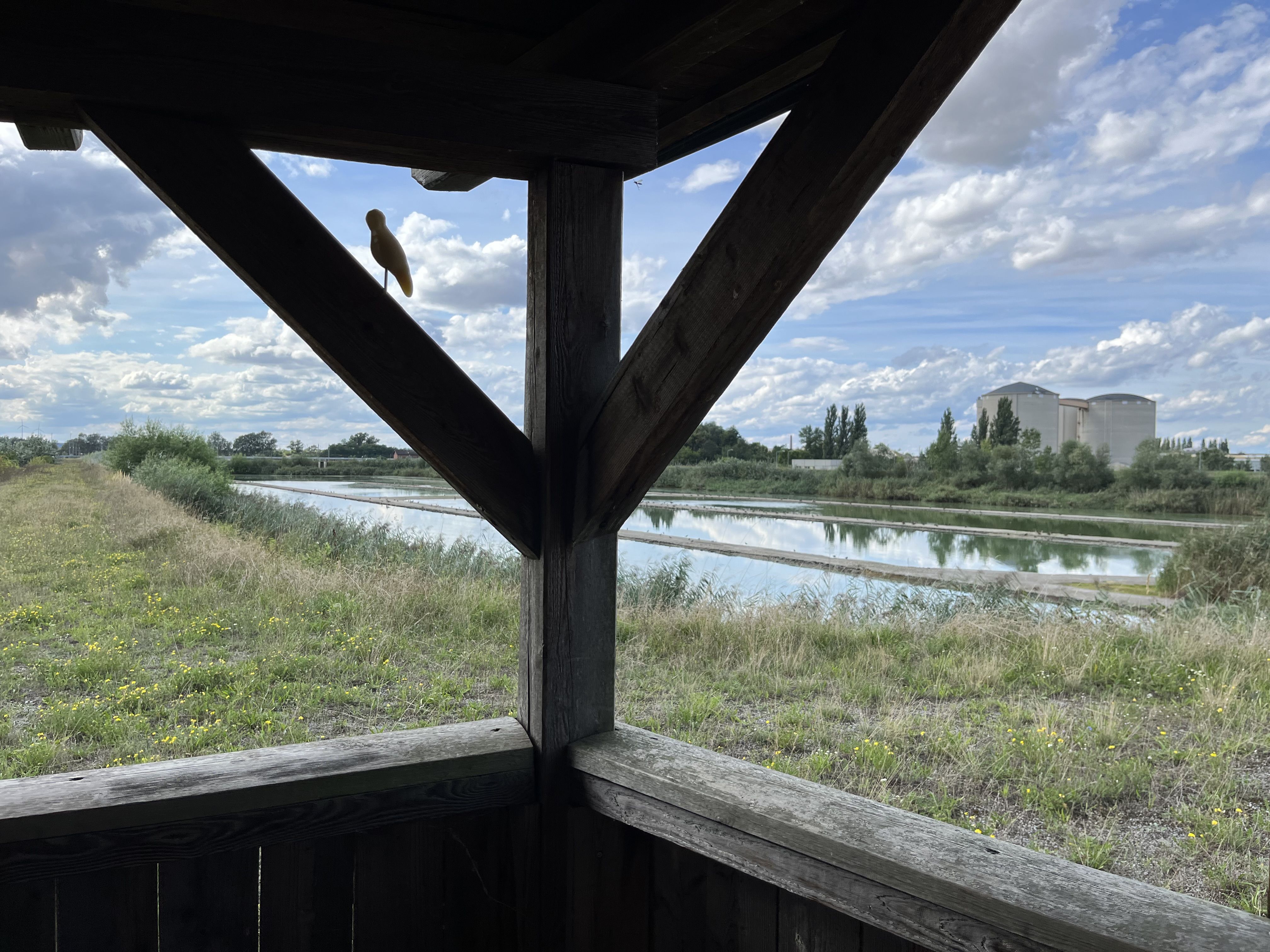
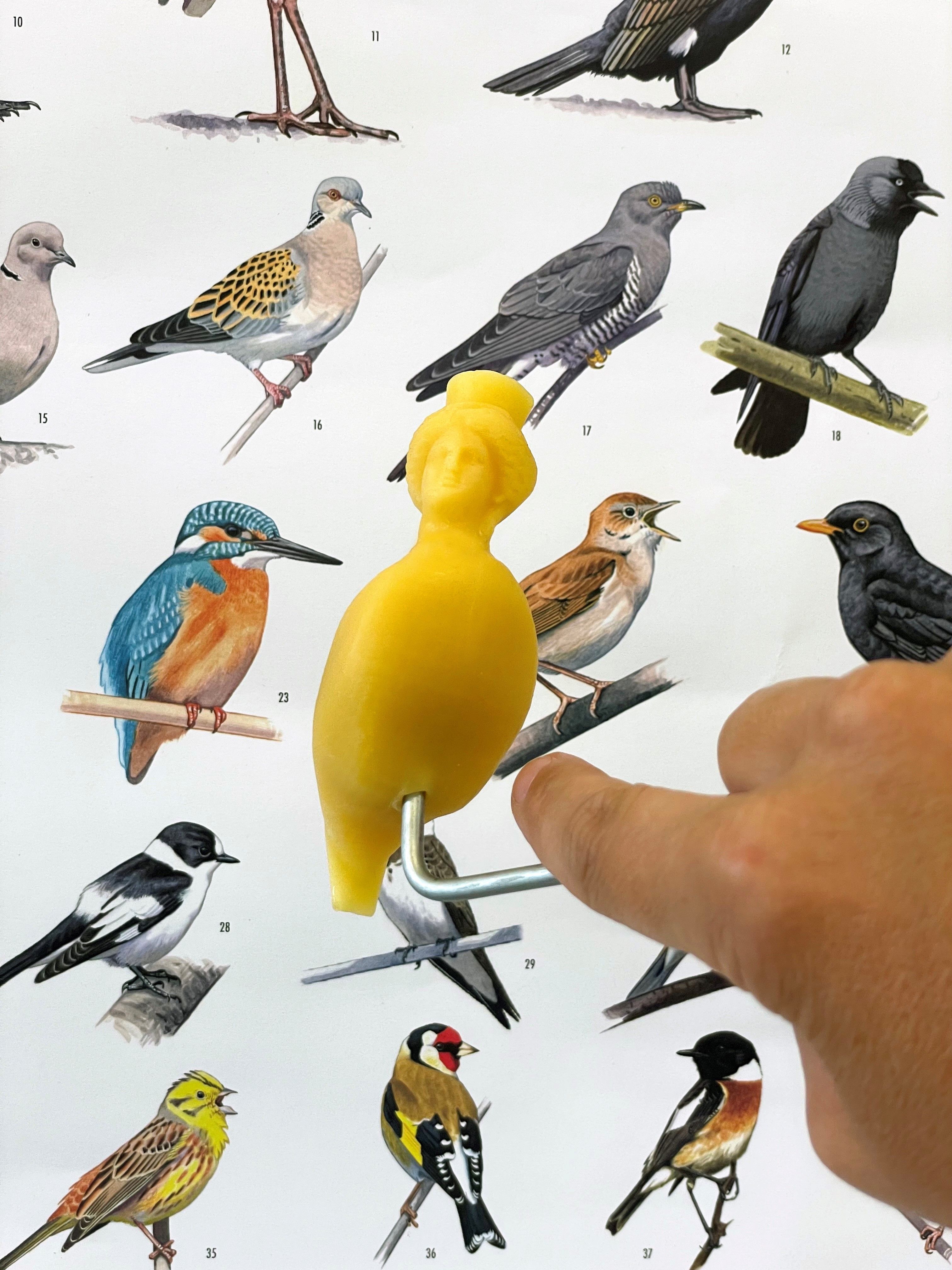
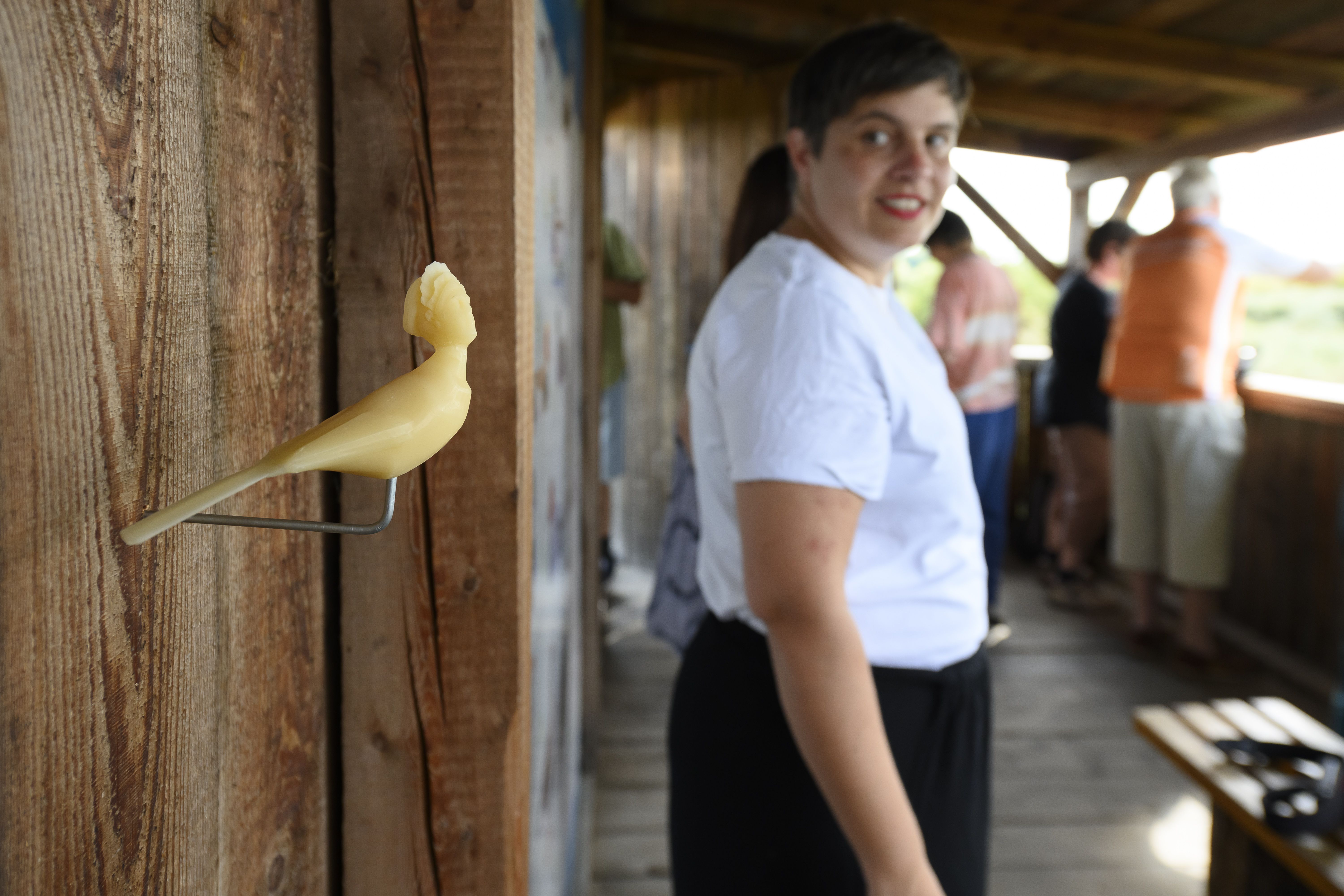
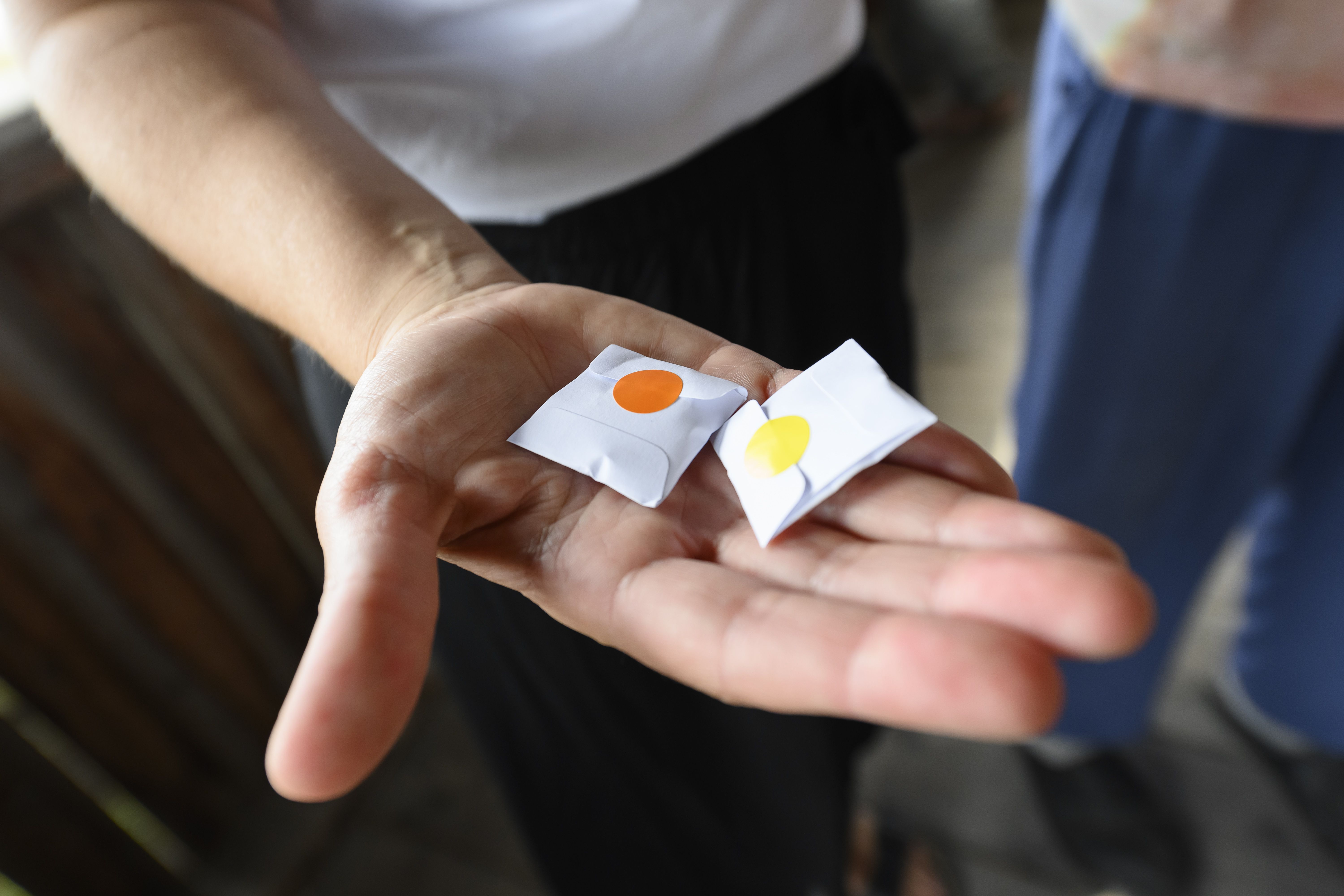
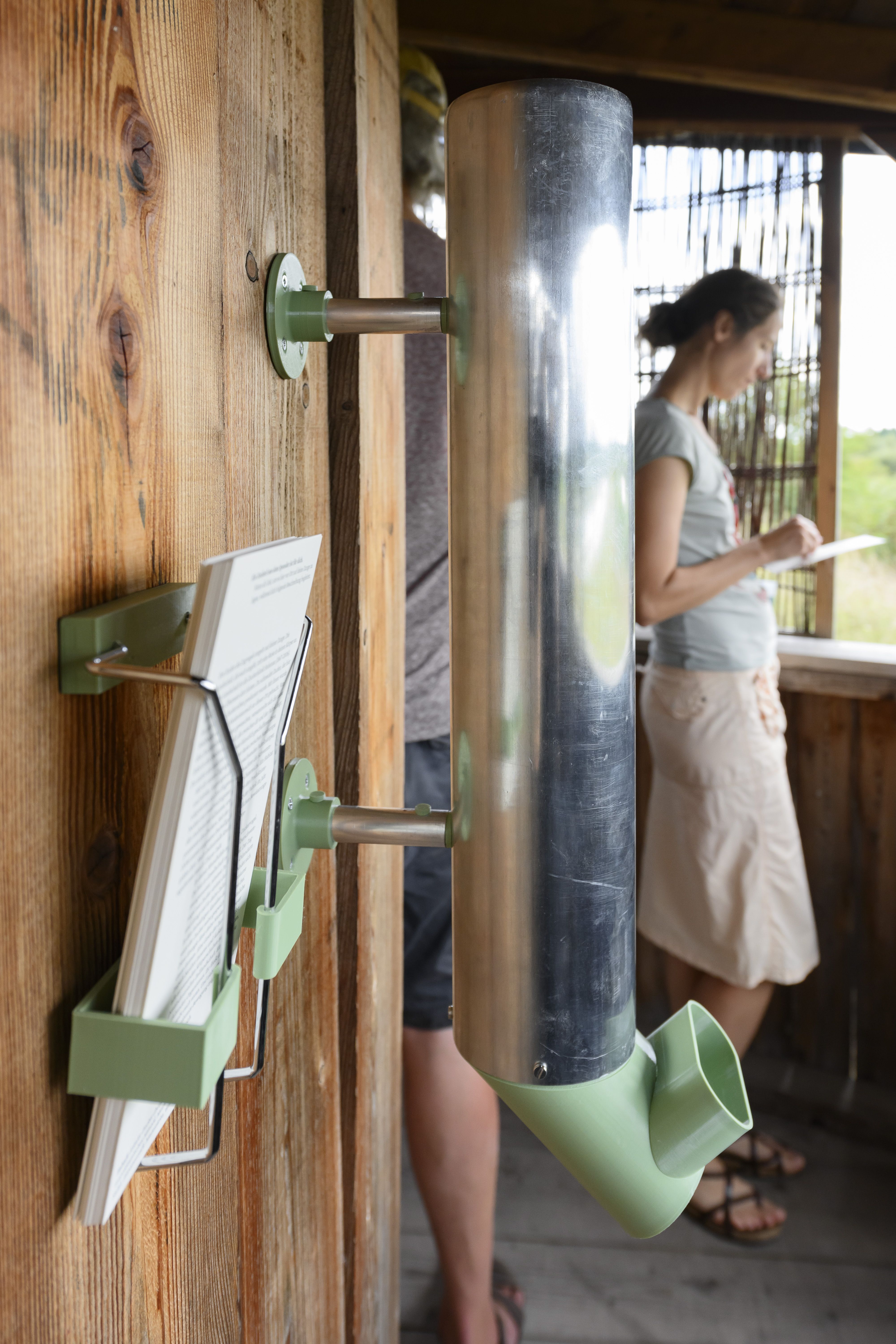
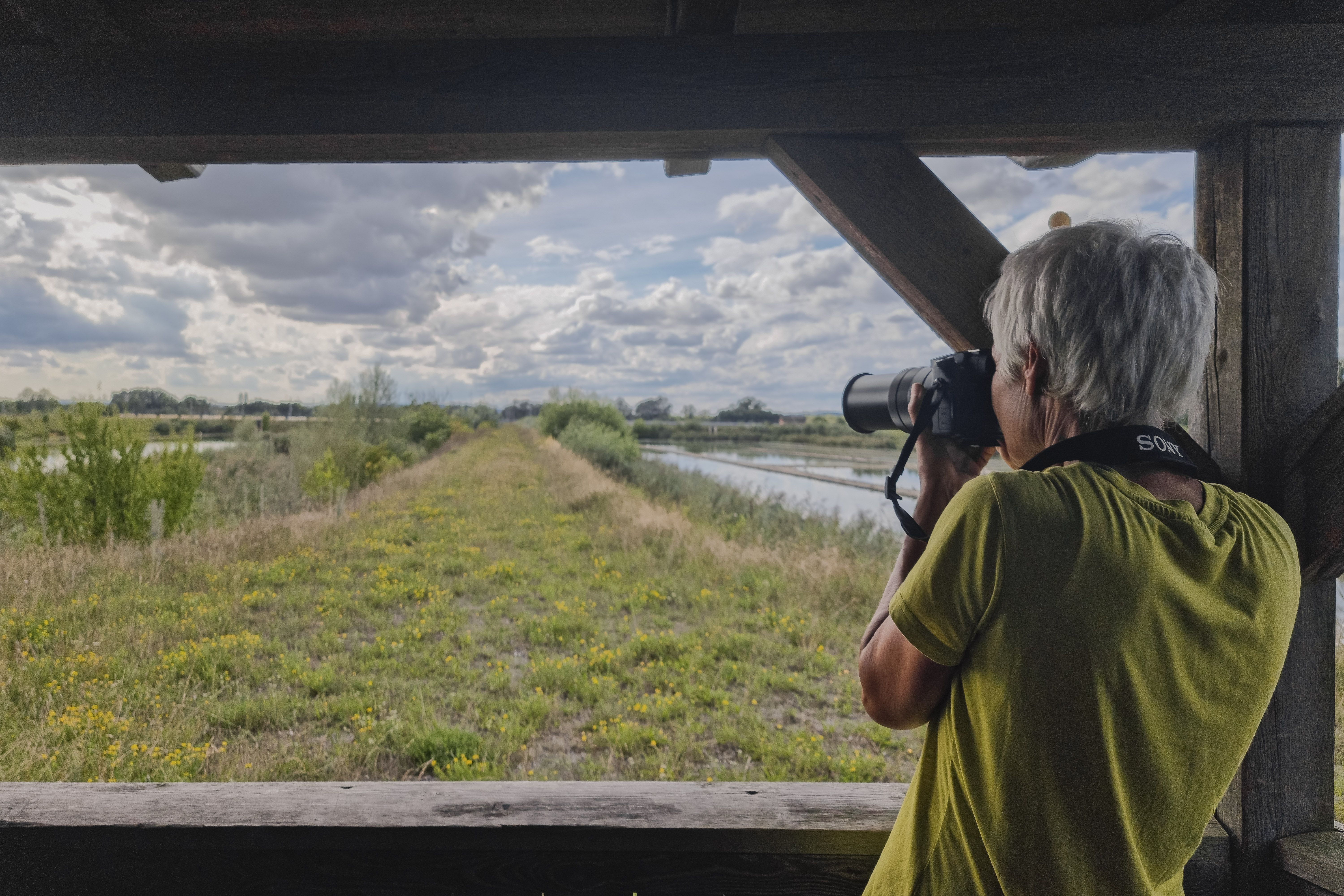
Ilona Neméth
Grandstand 8, 2022 (on display until fall 2025)
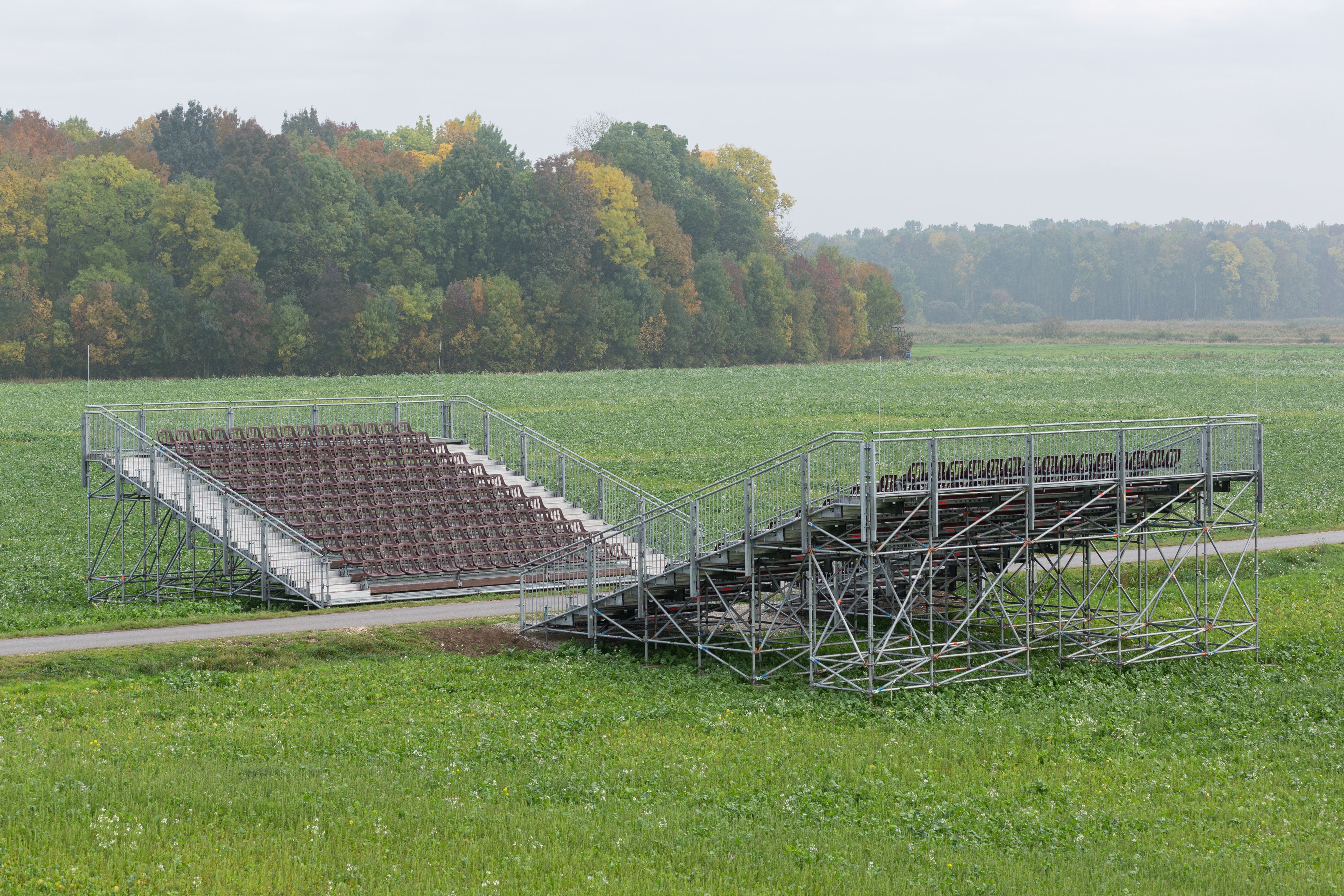
Installation consisting of two grandstands facing each other
Ilona Neméth’s work represents openness. Within her major project Grandstand, for which she has been using special grandstand elements on-site as readymades that she has placed either indoors or outdoors as sculptural manifestoes since 2012, Grandstand 8. Greetings from Bruce Nauman to Ringelsdorf-Niederabsdorf has a special status because it will remain accessible and visible on-site for the next three years. The second part of the poignant title refers to a small pencil drawing by Bruce Nauman that shows a grandstand consisting of two opposing concrete stair elements. The location chosen in Ringelsdorf-Niederabsdorf was a stretch along the Iron Curtain Trail that is situated between an embankment and an agricultural landscape and offers enough space for the large installation in the open border terrain. The monumental beauty of the two bleachers, which each have several rows and are located directly next to the bike path, is baffling to us because we do not expect it. The elements invite us to pause for a moment. Their use opens up new possibilities regarding how we approach sculpture, architecture, monuments, and social design. These grandstands provide a platform for thoughts about physical, natural, and geopolitical borders and how they can be overcome.

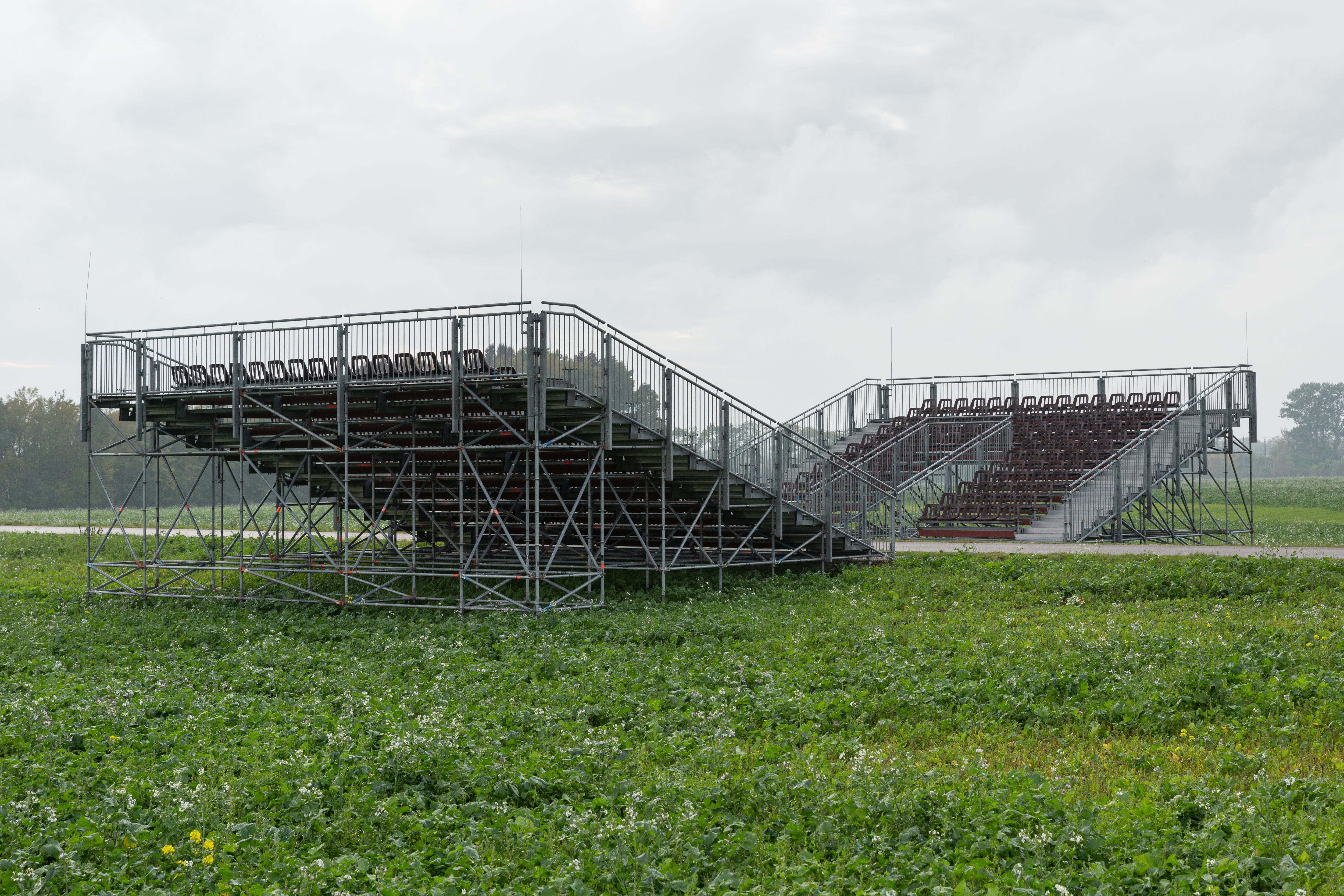
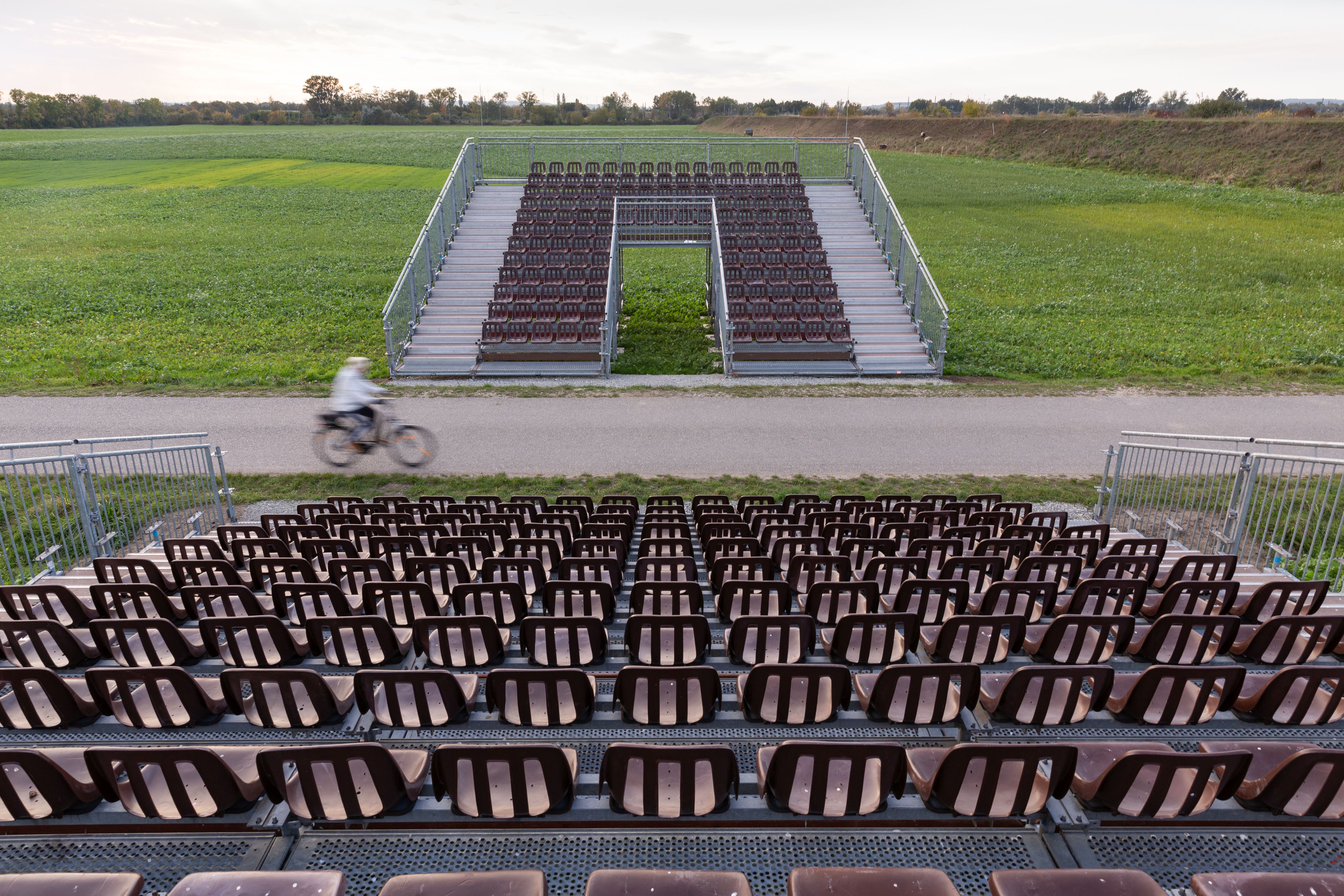
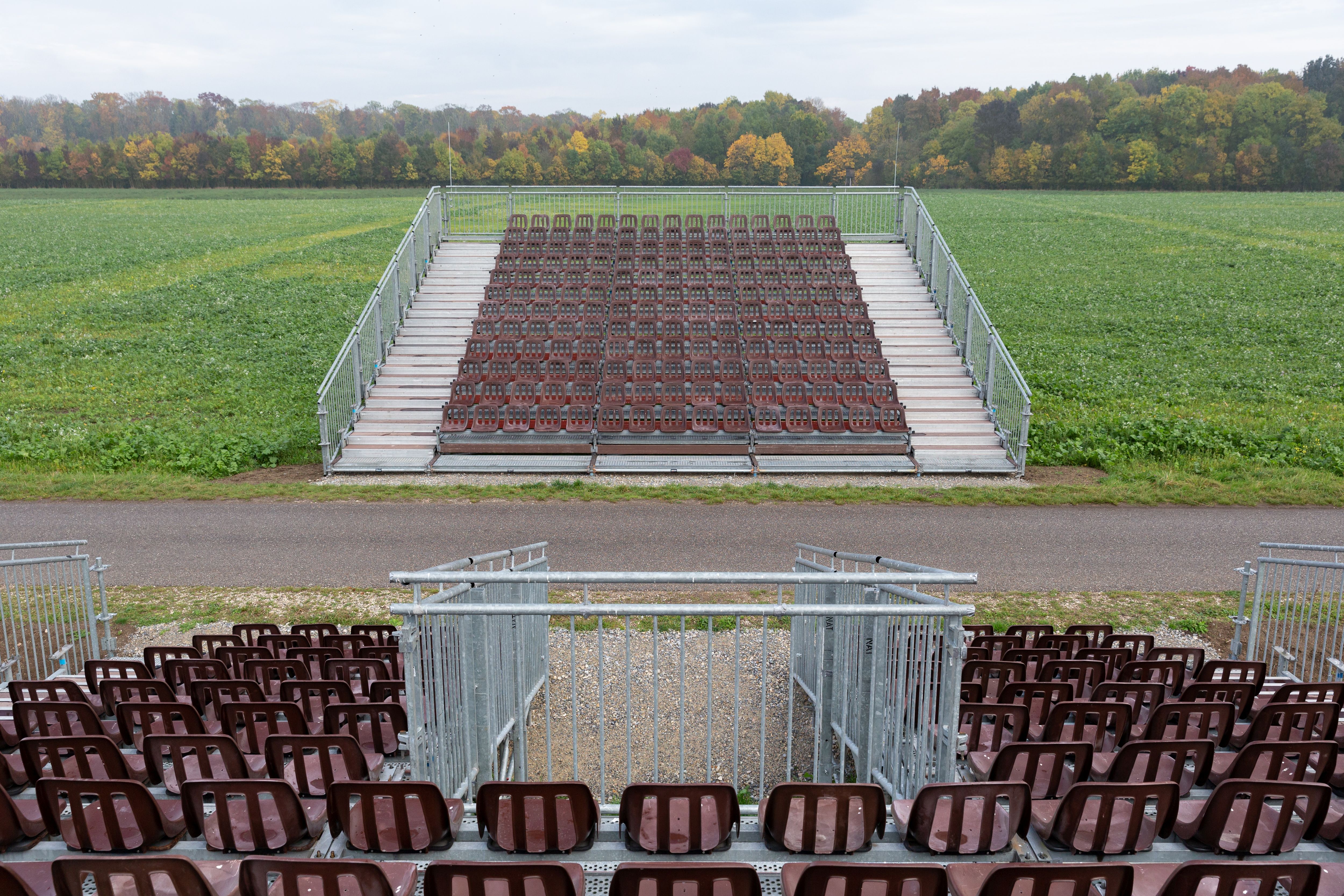
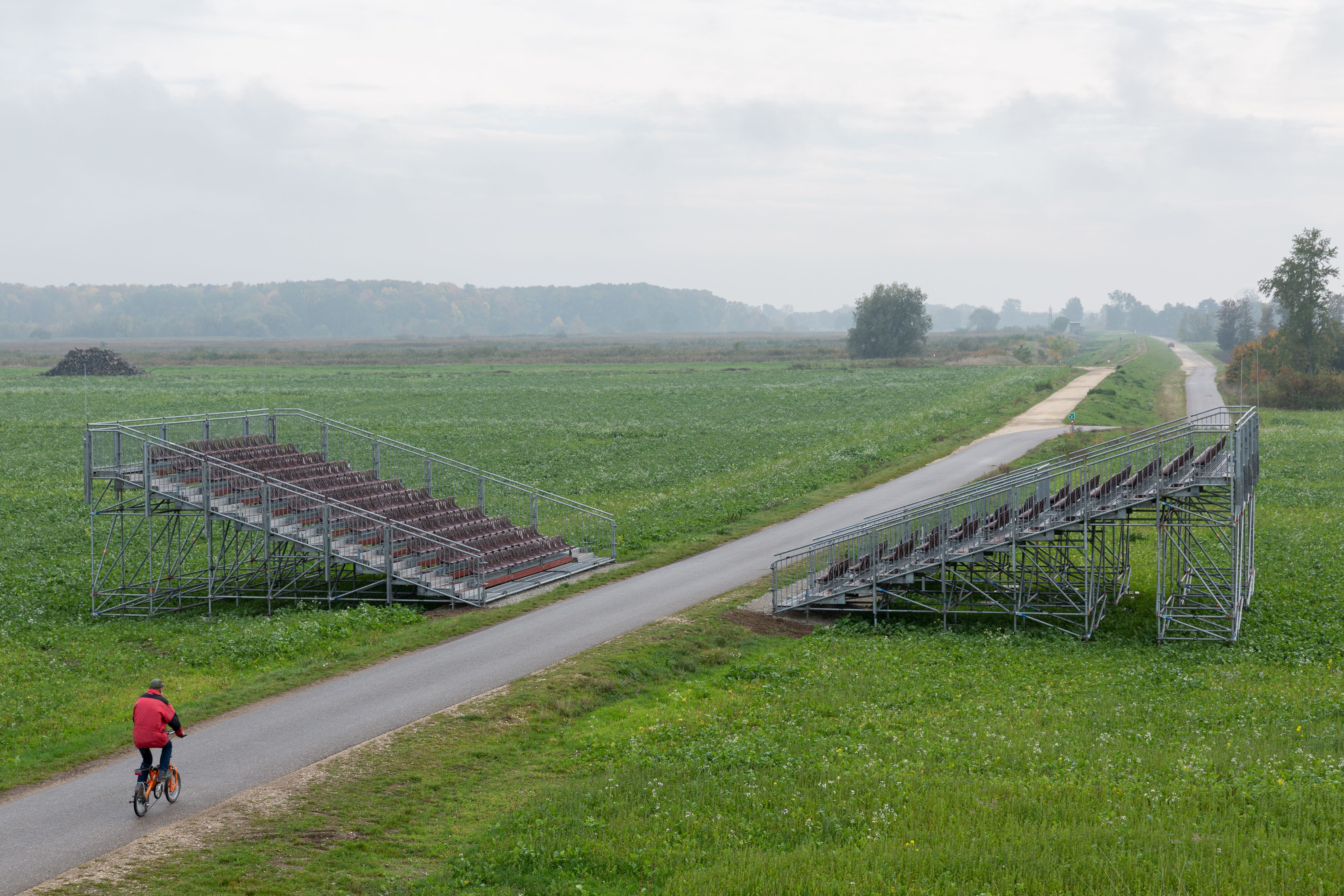
Christina Gruber
Shapeshifters, 2022 (terminated)
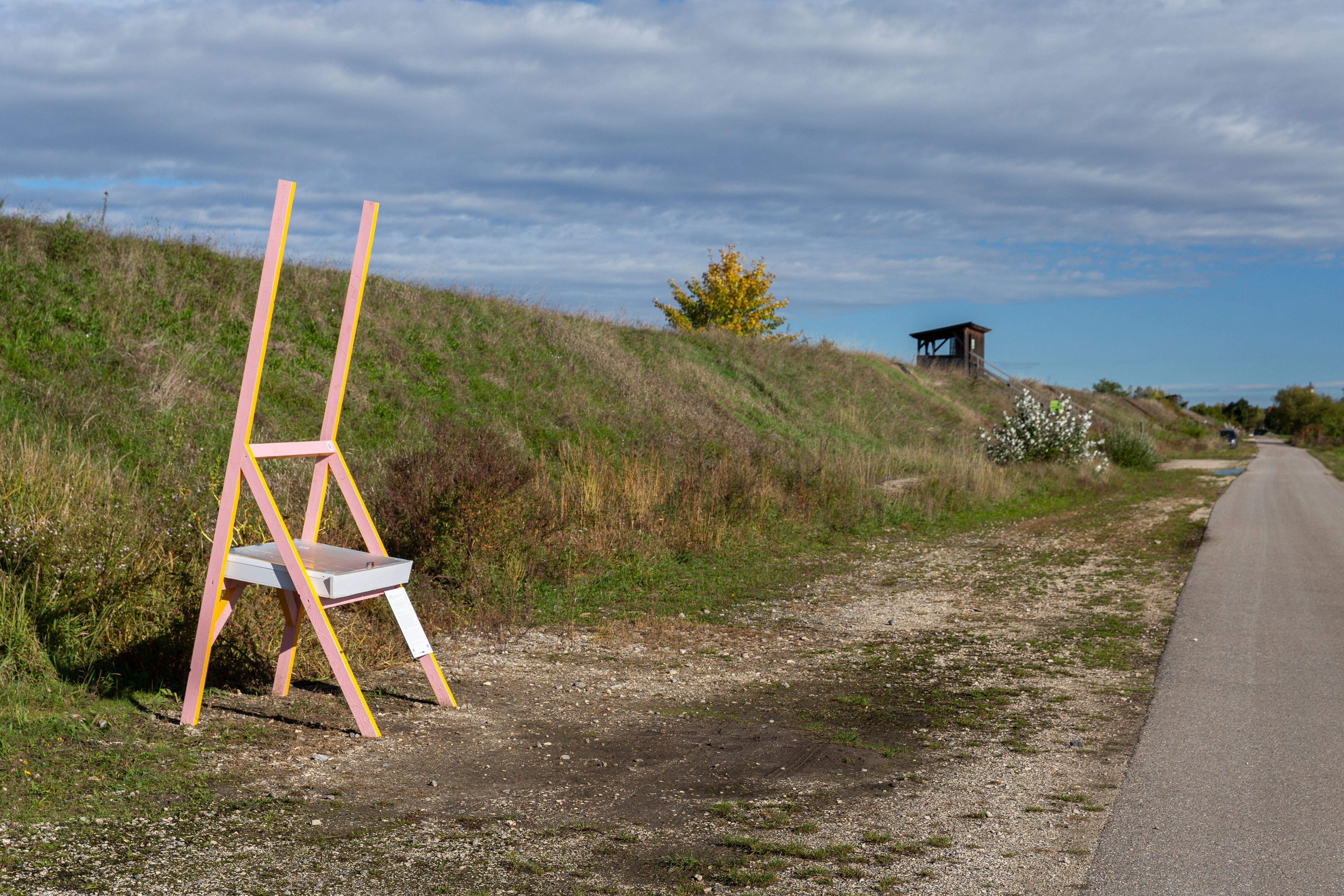
Rivers and Stones, Interactive Audio Sculpture, and Intervention
Shapeshifters focuses on the act of listening and the multifaceted and ramified history of rivers. Is it possible to adjust our ears to our environments and give these more room again this way?
A small stone can be decisive for this: the otolith. This organic mineral is responsible for our sense of balance. The starting point for the formation of these crystals, which we humans share in common with fish, are often sedimentary rocks that appear in rivers in a dissolved form. These stones also enable us to look into a river’s past. Paleontologists analyze the otoliths of fish to gain insight into the primordial era. The individual layers and rings of the stones make it possible to draw conclusions about the life of the fish and their living conditions.
With sculptures in the form of these otoliths, which visitors can take home with them, we can sound out the primordial ocean, alligators, and sturgeons in the riparian forest and banks of the March River together.

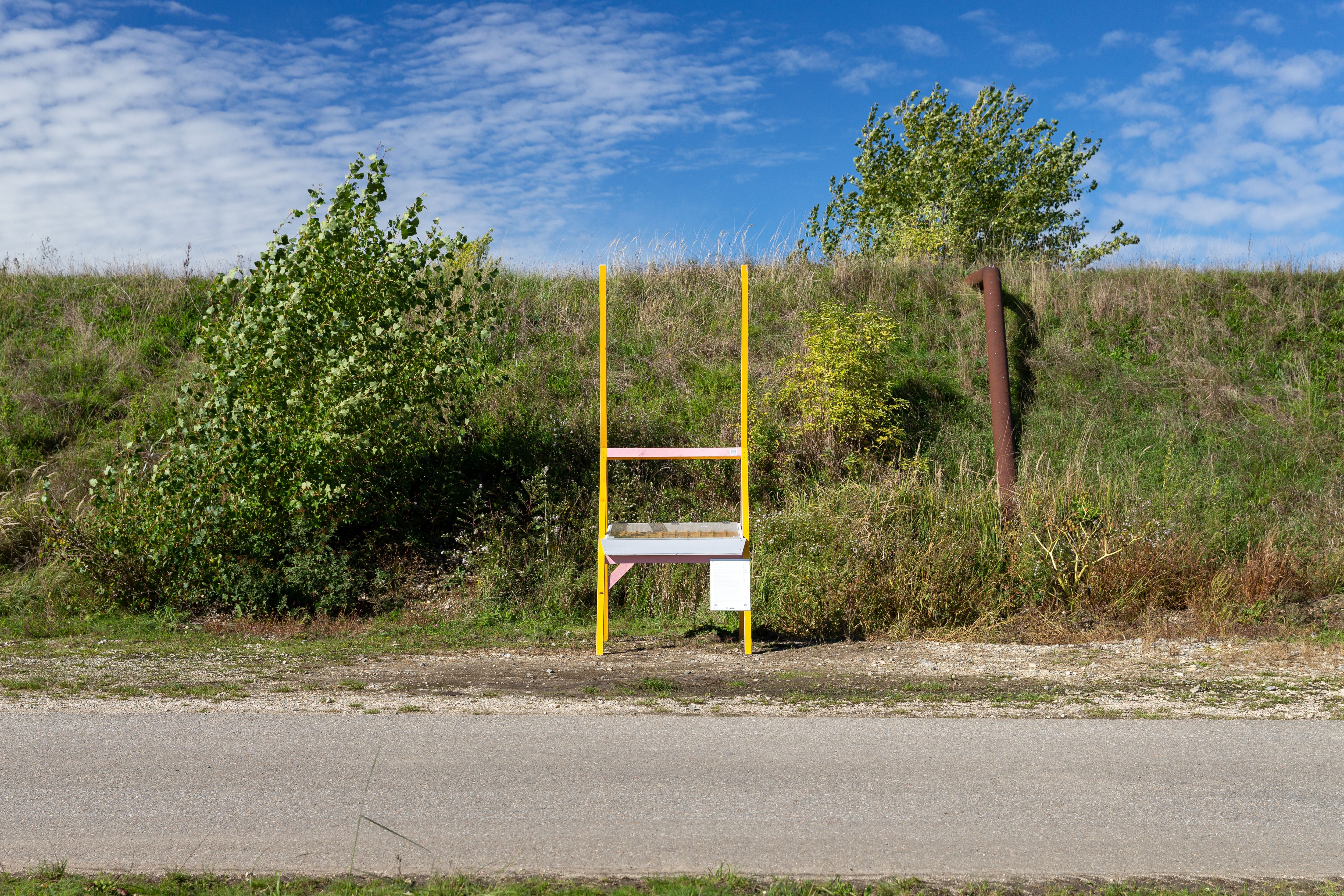
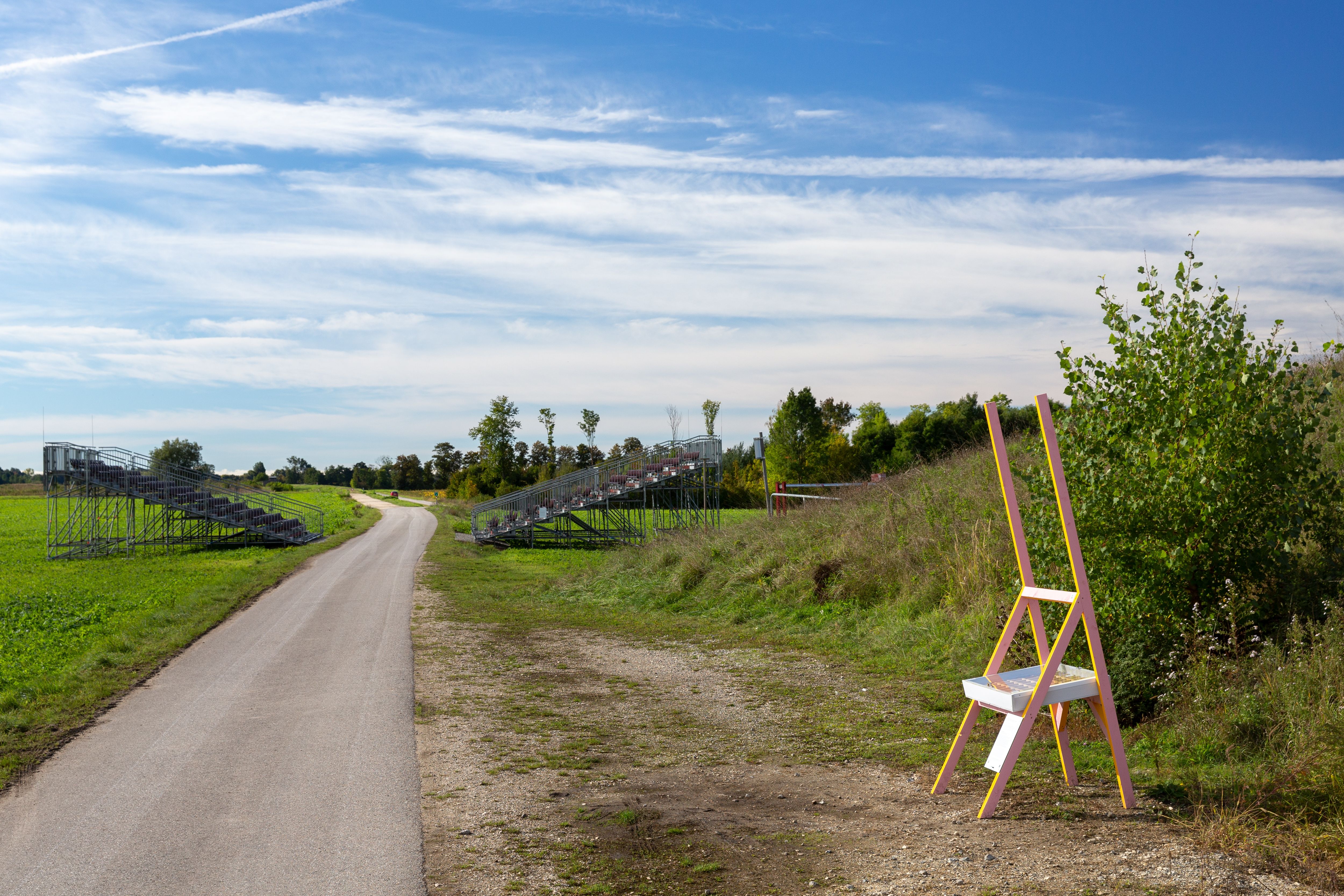
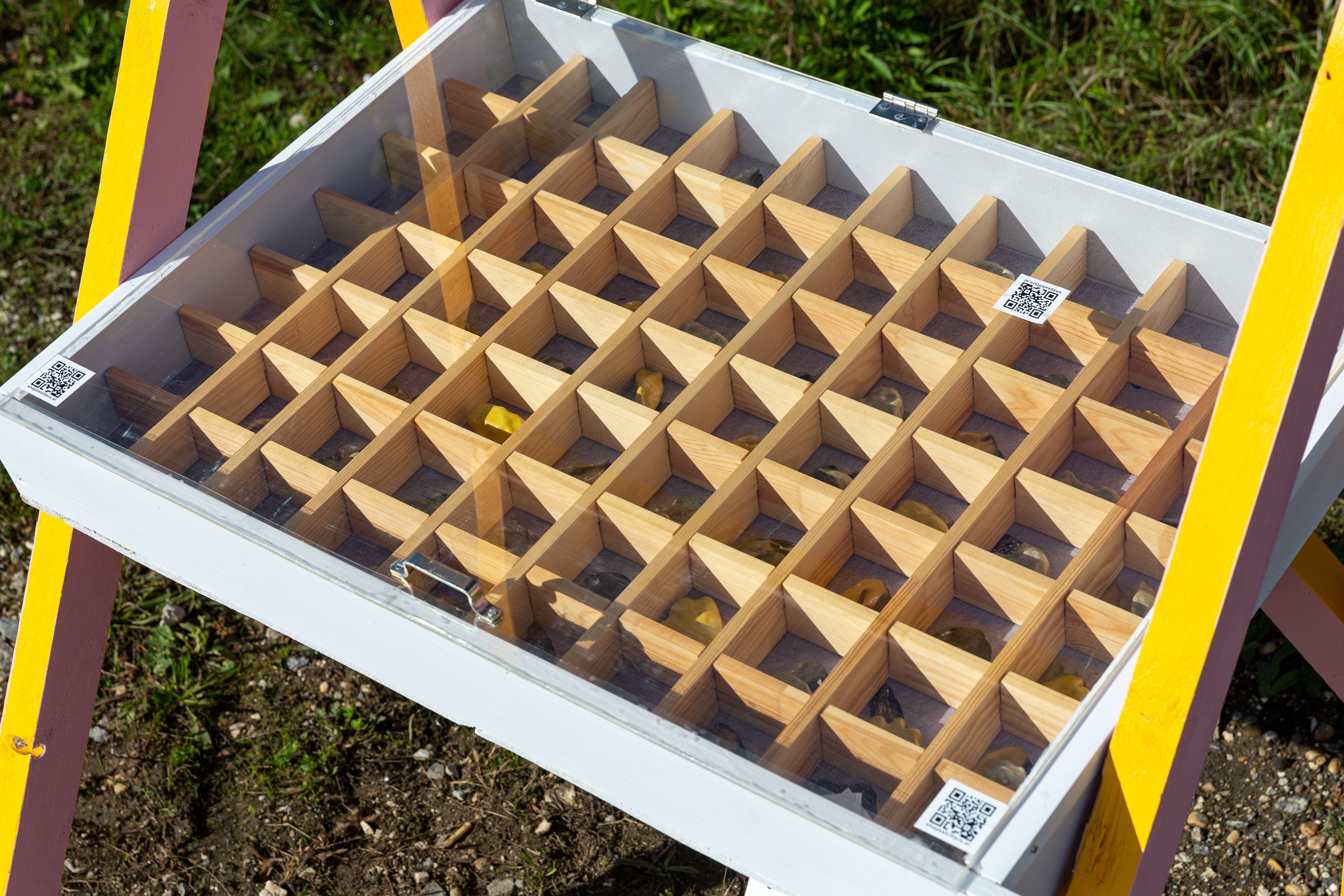
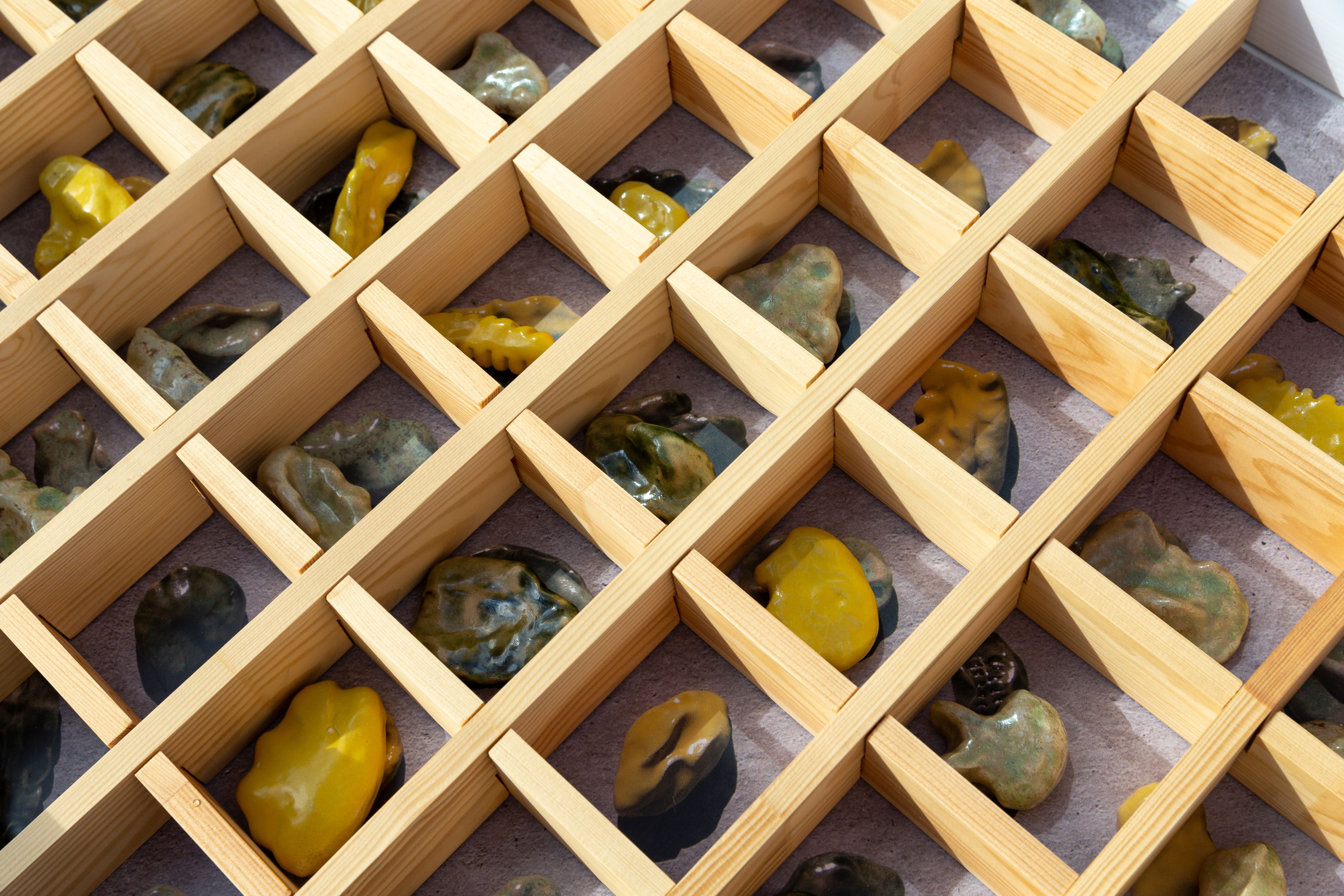
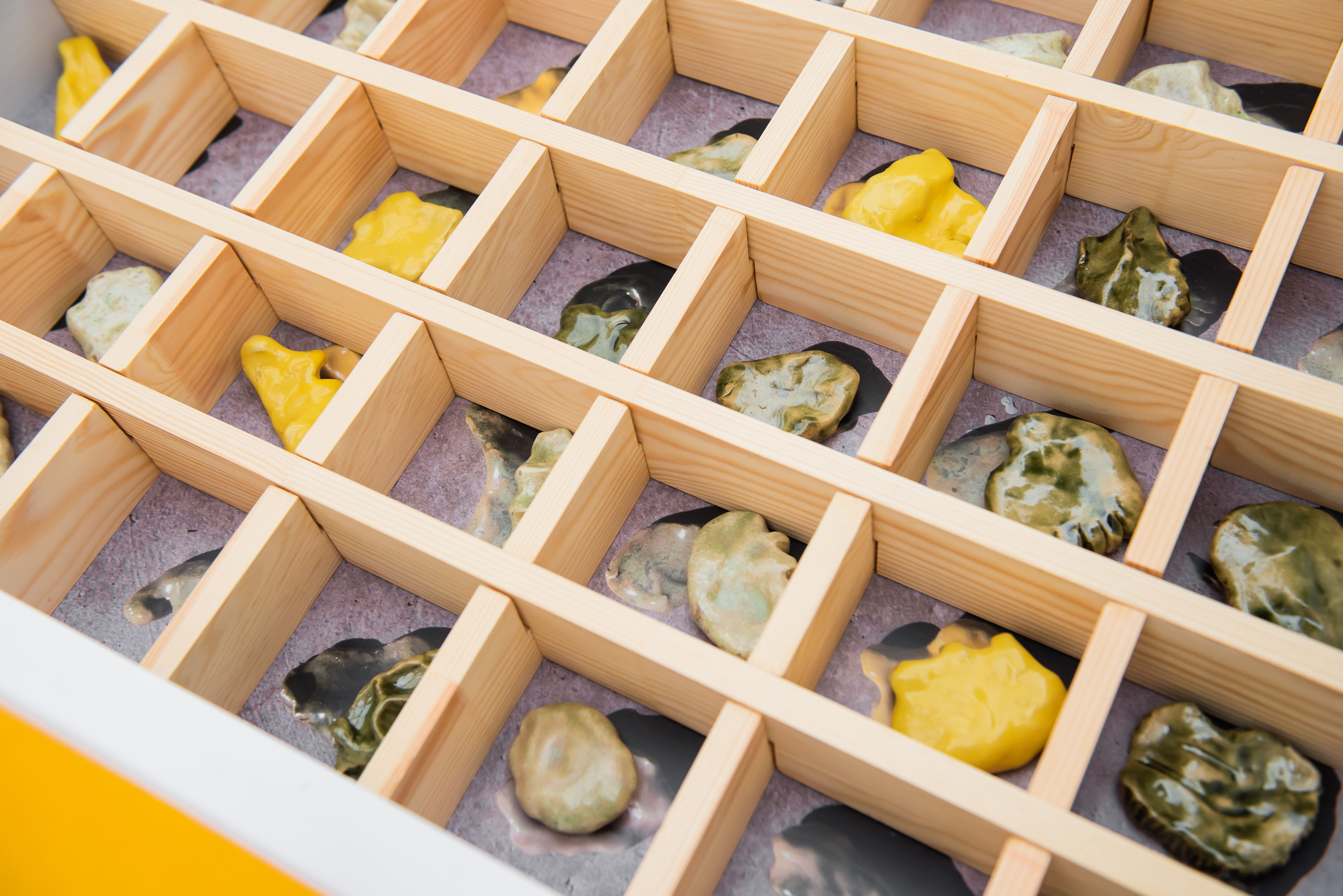
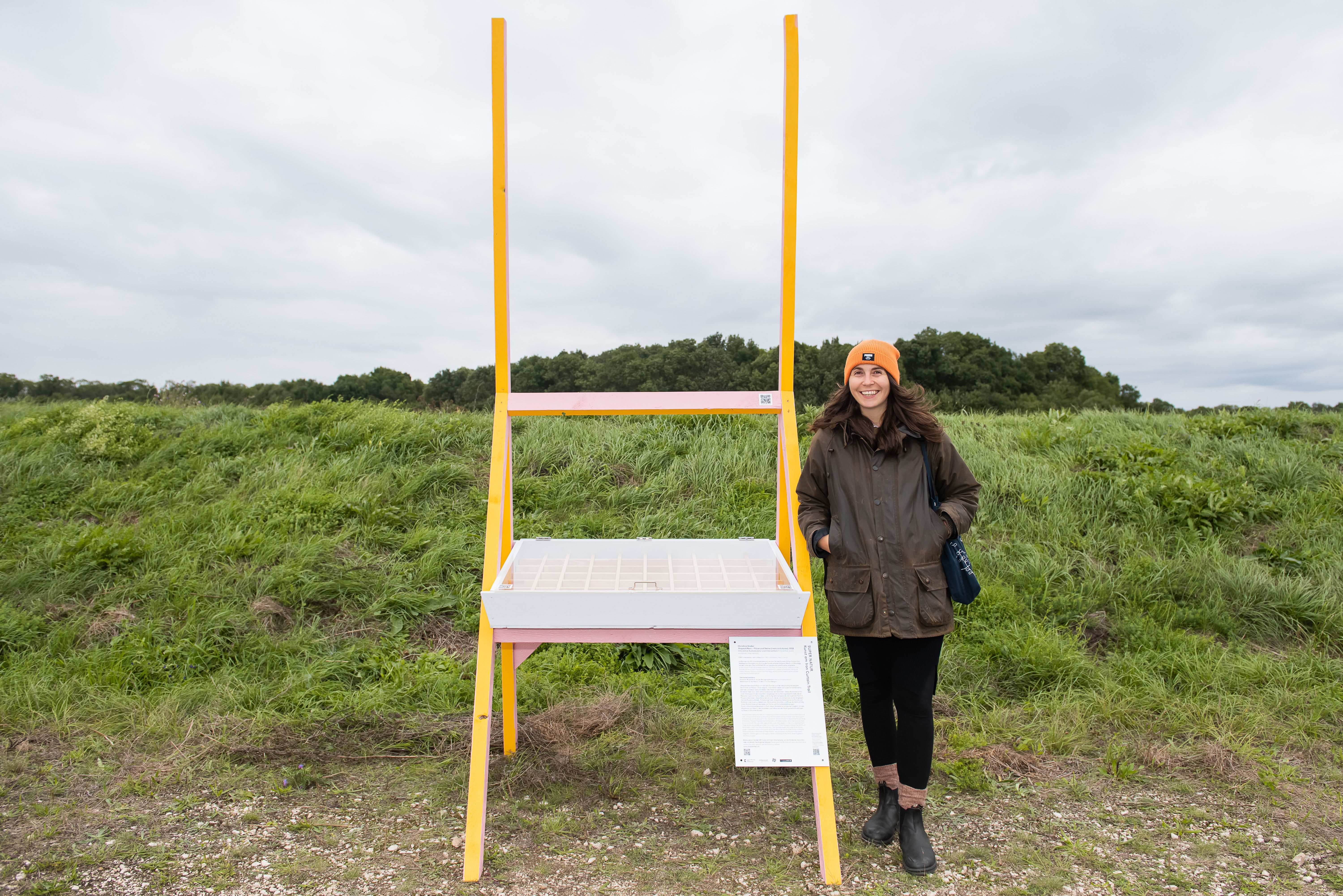
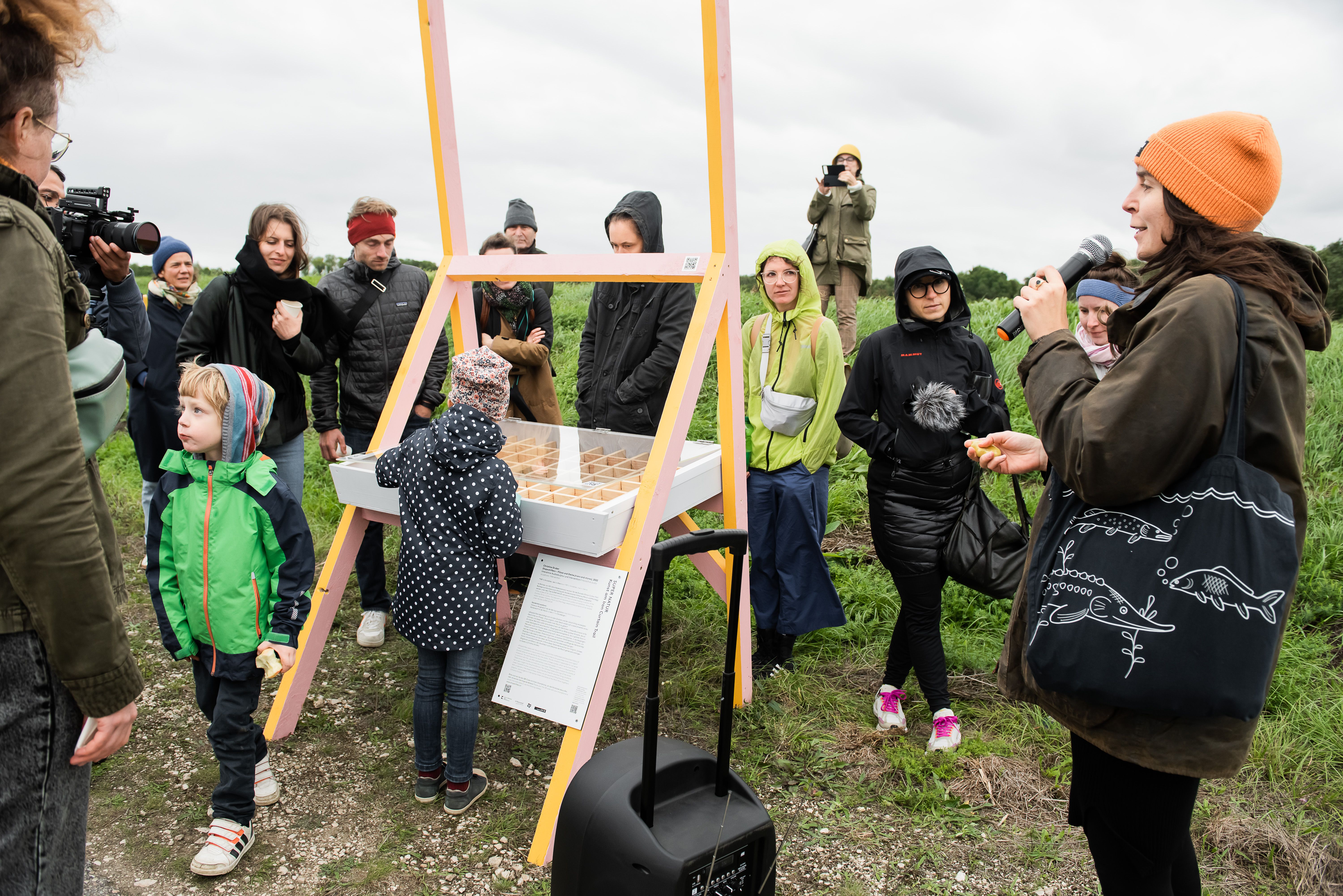
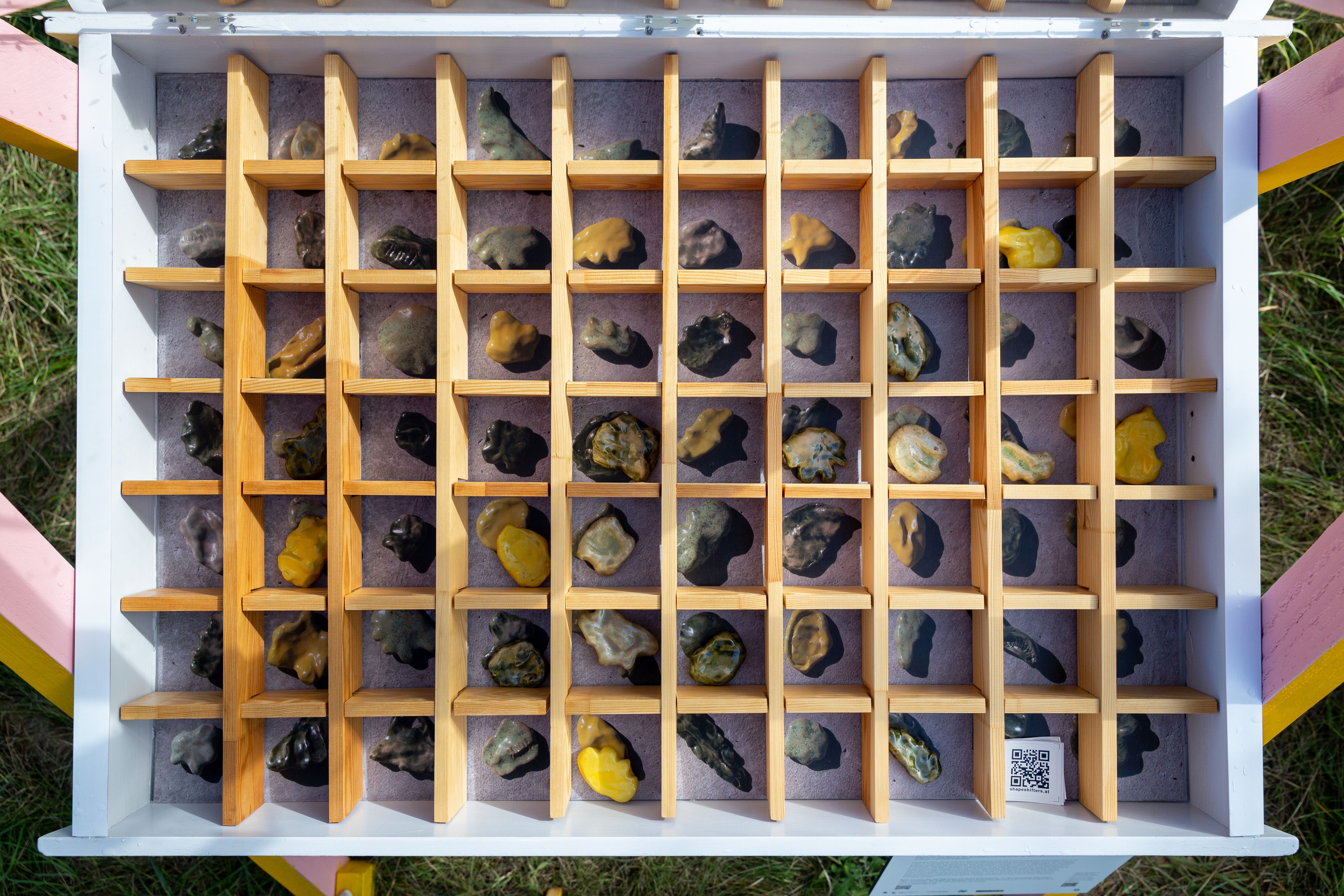
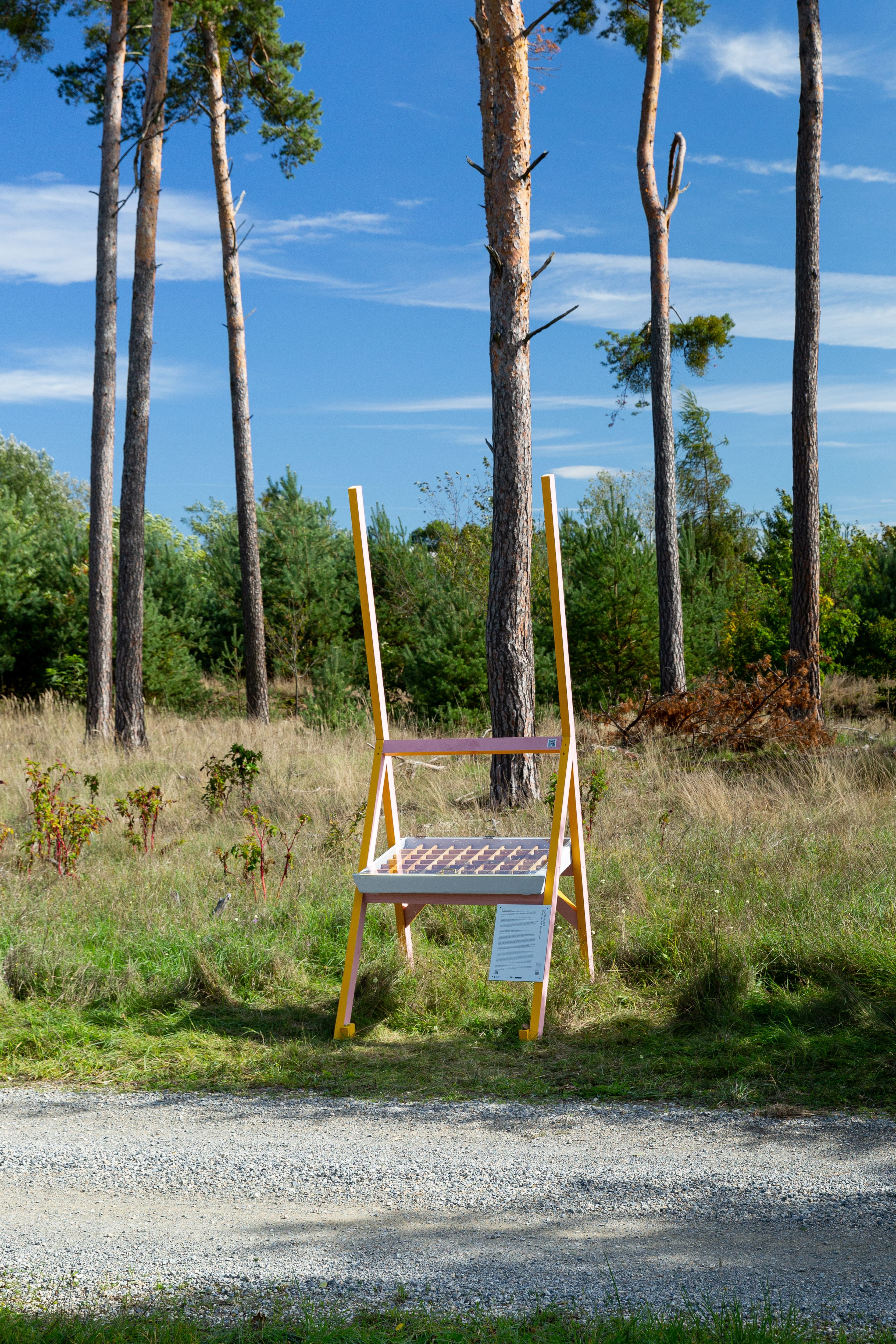
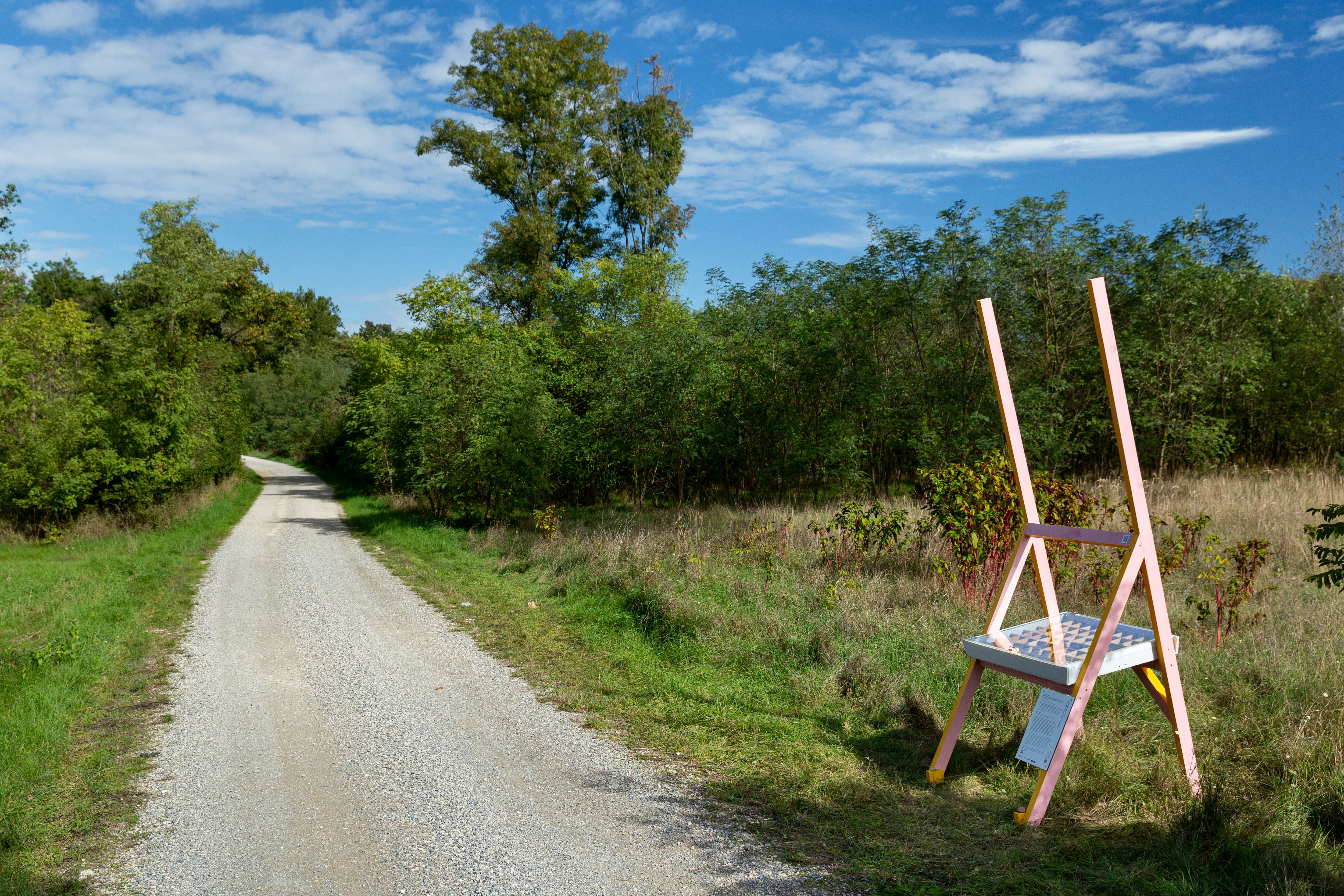
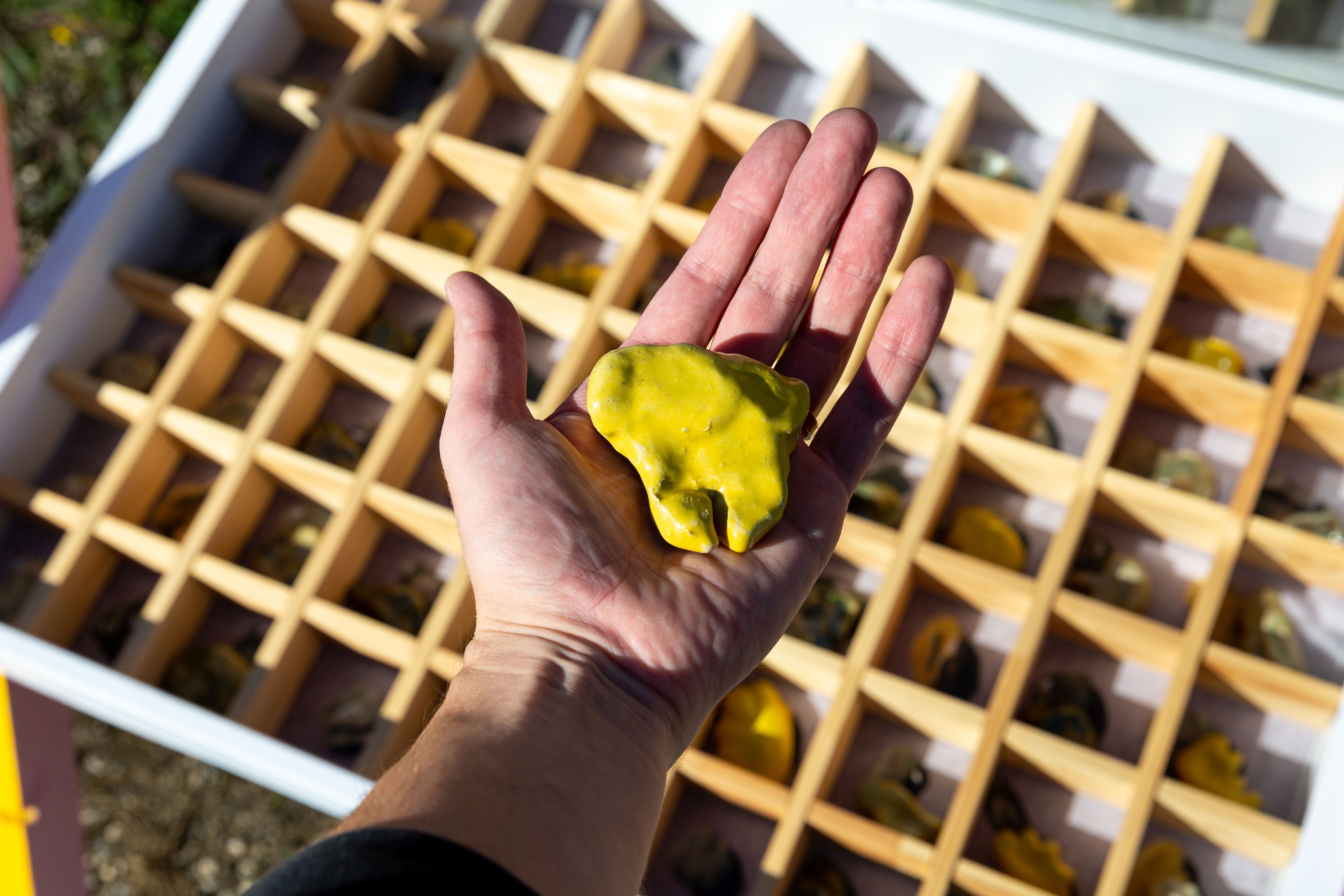
Barbara Kapusta
Futures, 2022
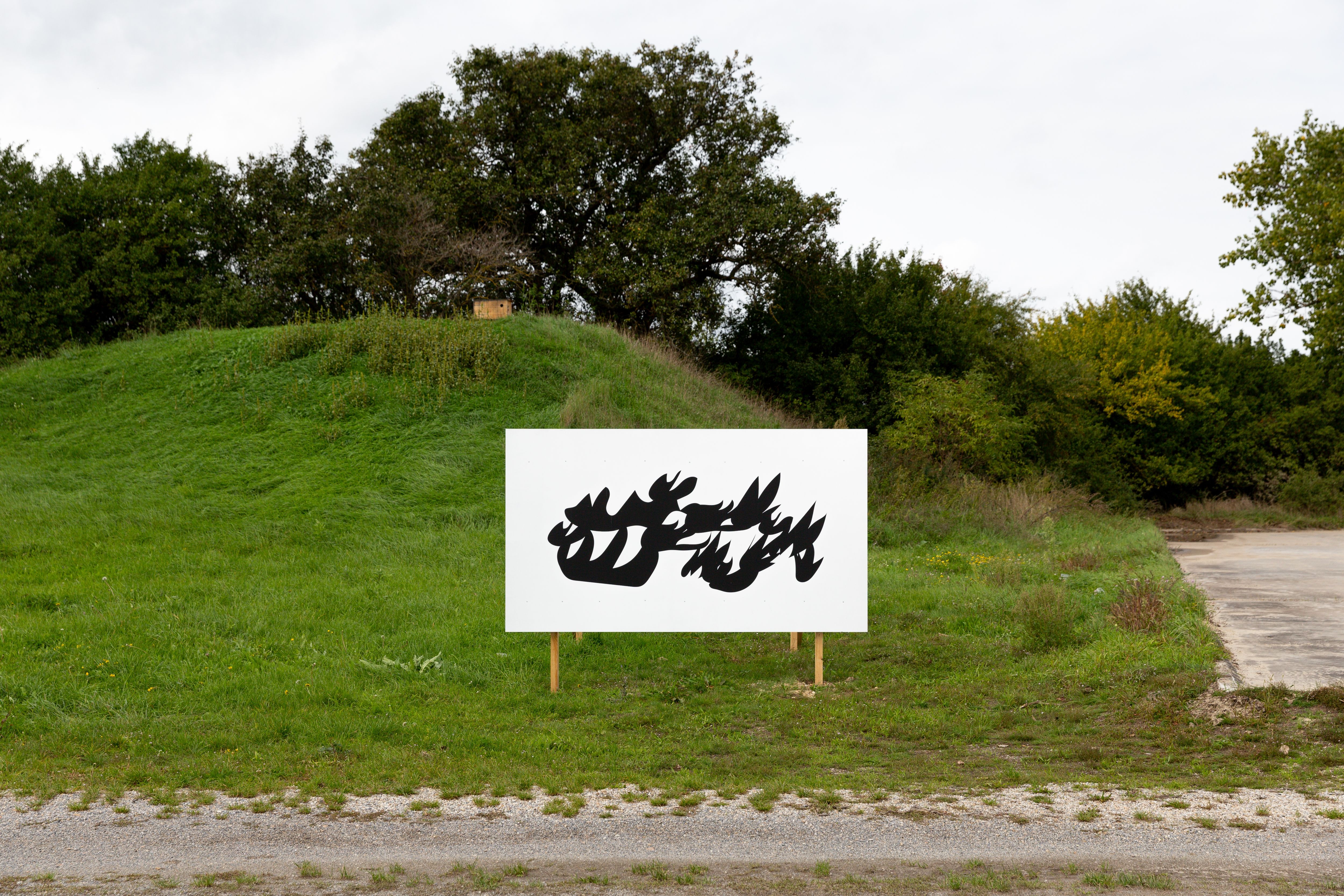
Installation
Futures can be seen at three locations along the bike path between Marchegg and Hohenau. Three big text-images are visible from afar. The images are written in the “Futures” script, an alphabet of 26 signs that Barbara Kapusta developed for her exhibition of the same name in the Kunsthalle Bratislava in 2022. Their names are "Come Closer", "Excess And Heat", and "A New Fiery Community".
Futures addresses the circularity of repeated mistakes and the toxicity of neoliberal values and power structures that are inscribed into the ruins and deserts of earlier architecture.
It is also a dystopian science fiction that connects language and texts with objects and sculptural and animated bodies. It raises the question of alternatives, of “futures” for everyone that are based on a different economy beyond the extraction and exploitation of natural resources.
During the opening in autumn 2022 the text-images triggerd an augmented reality on site.

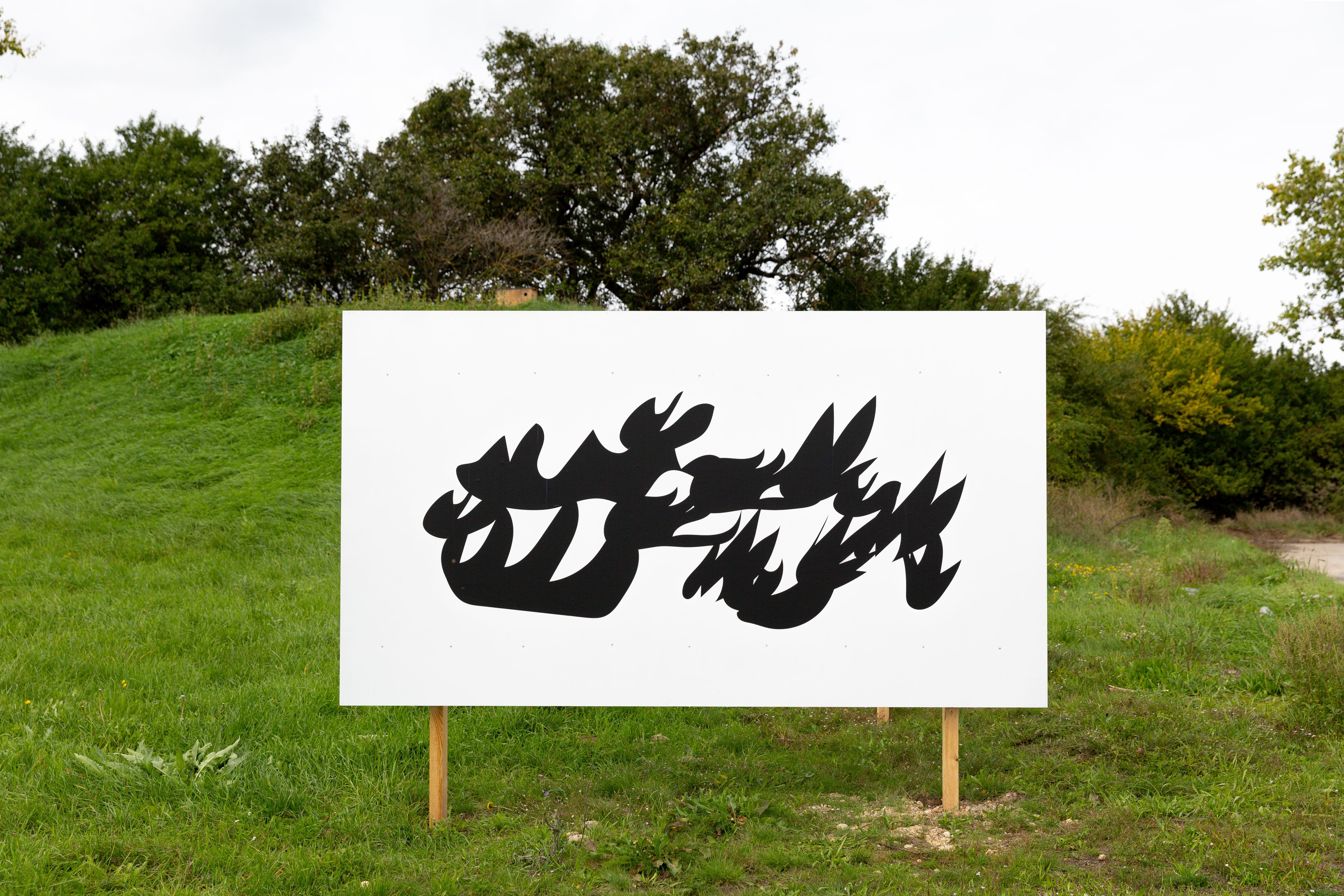
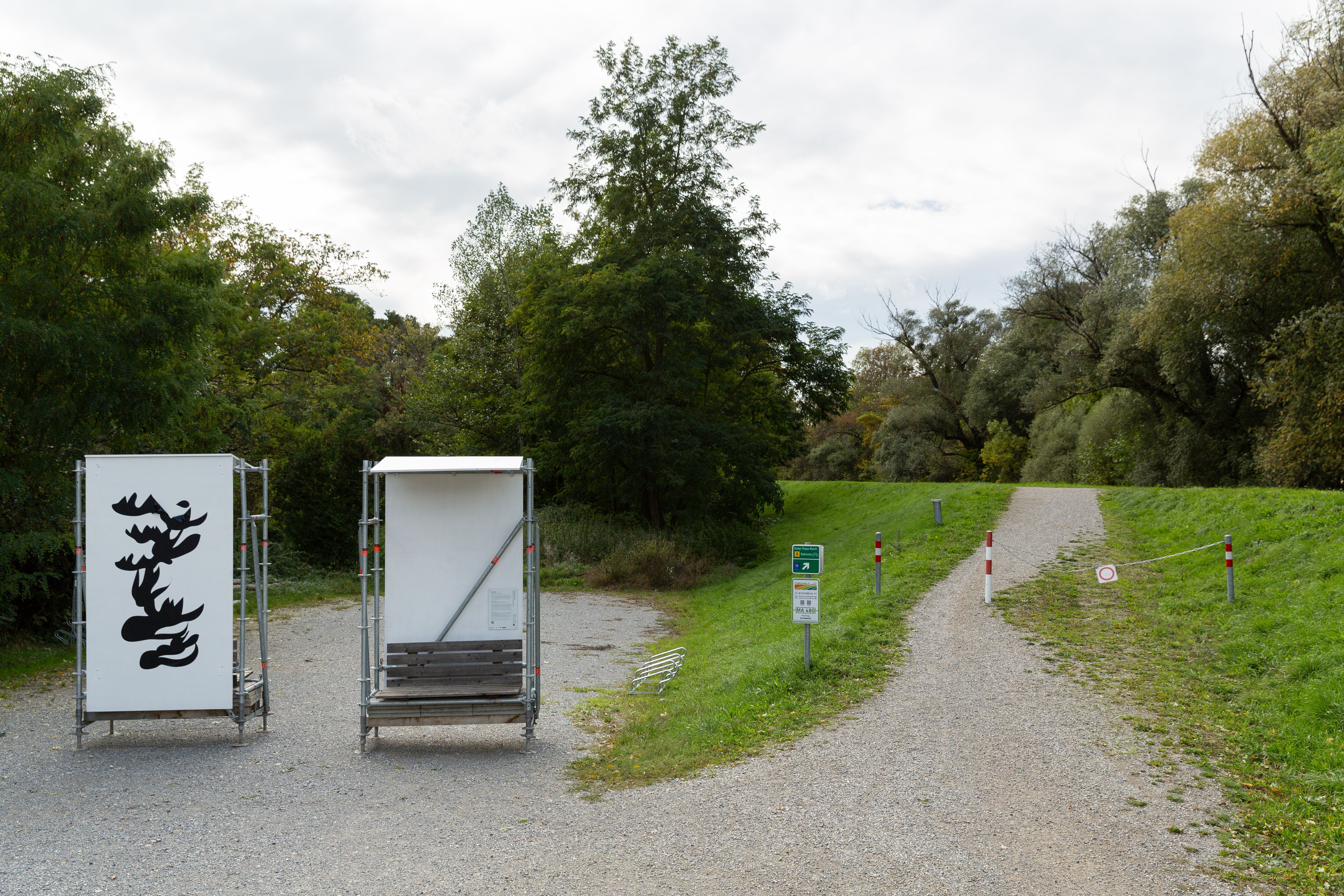
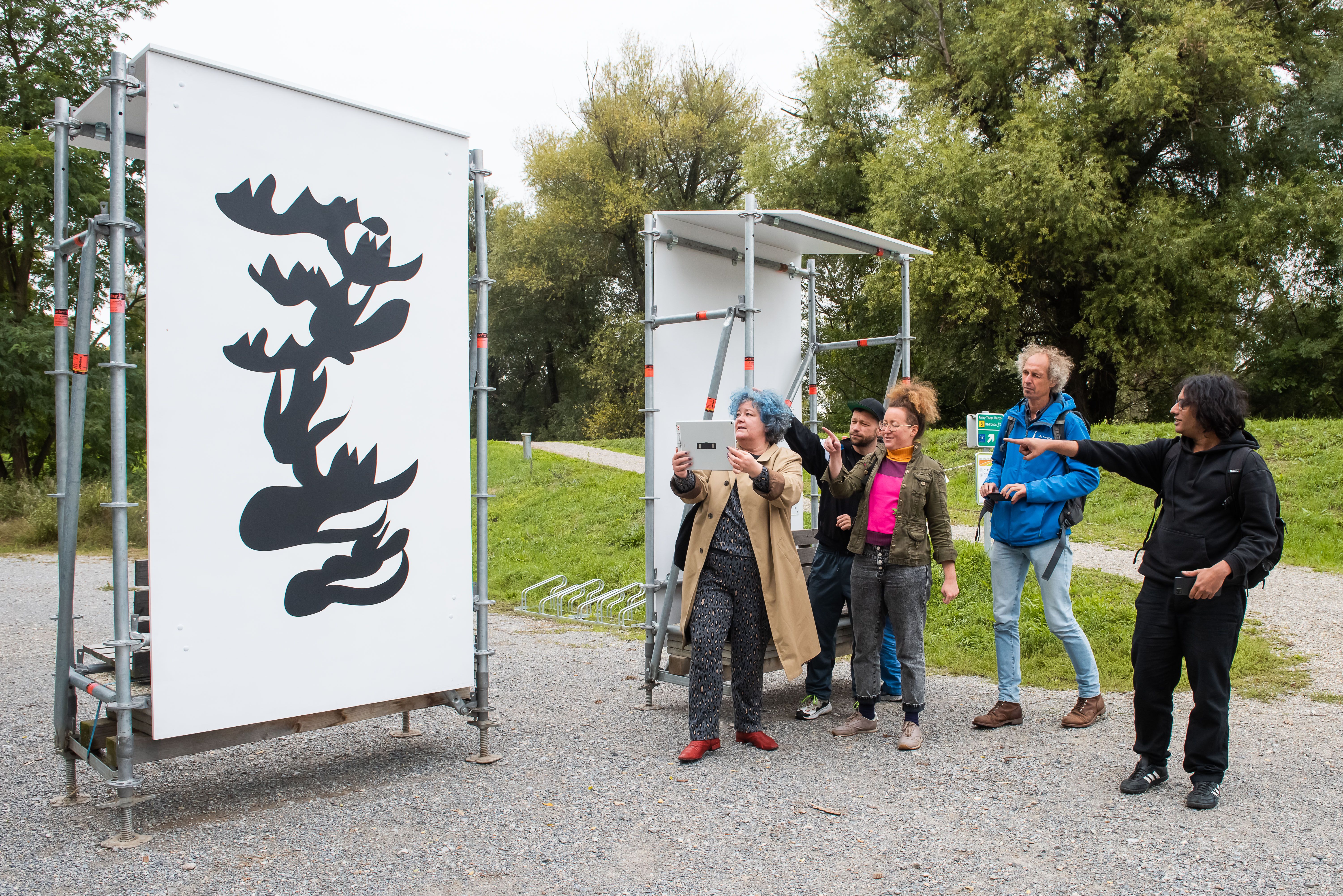
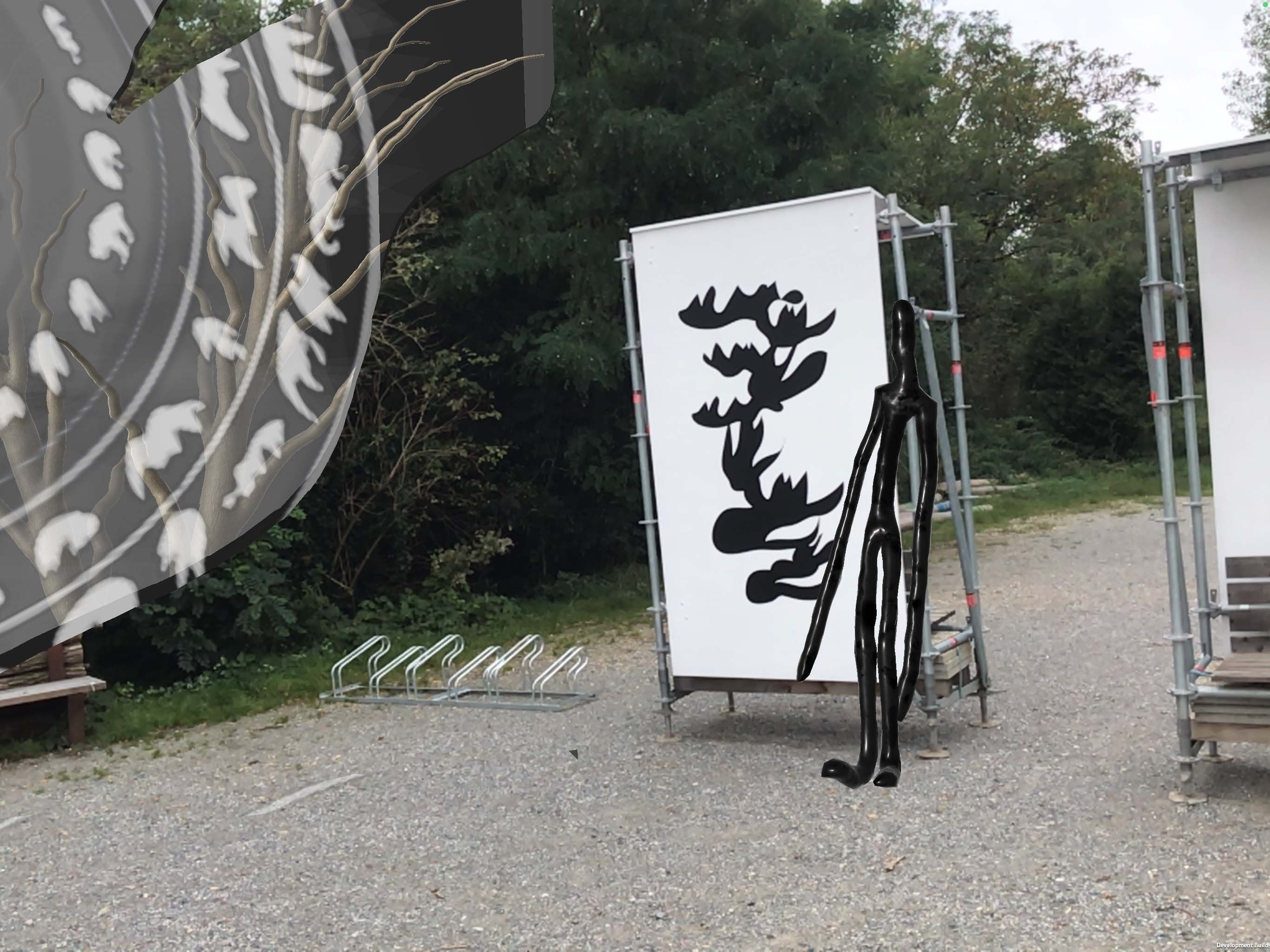
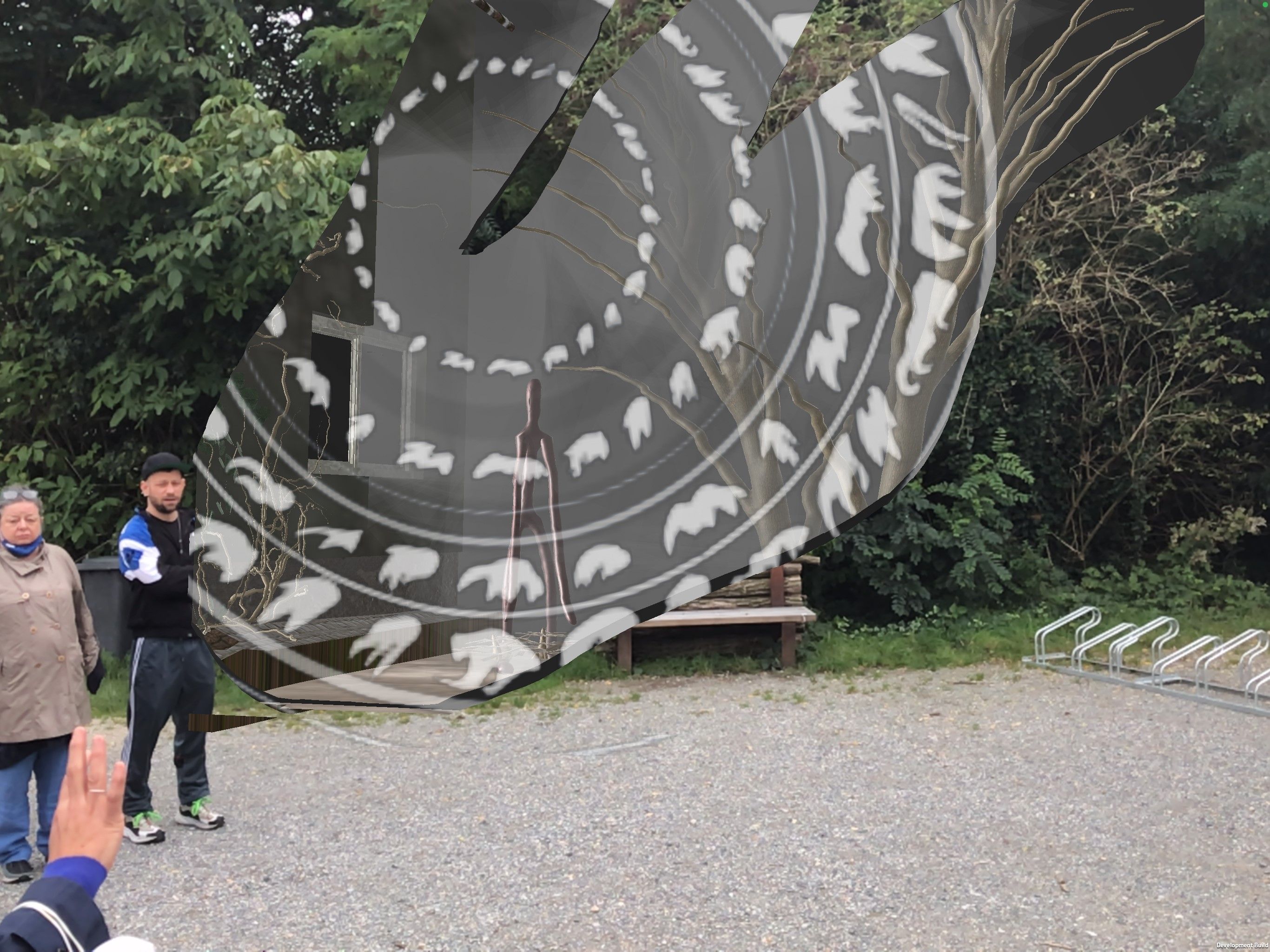
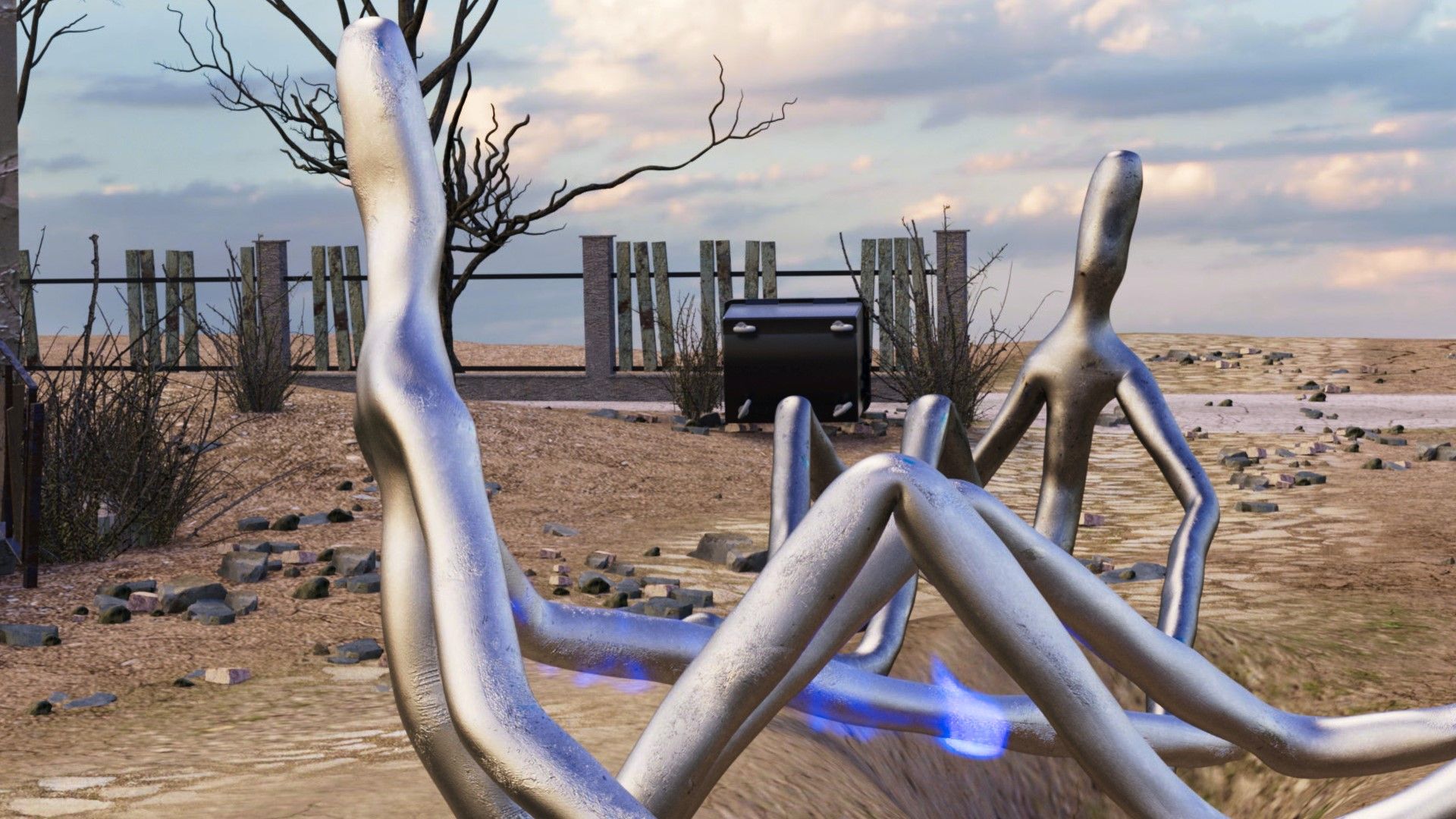
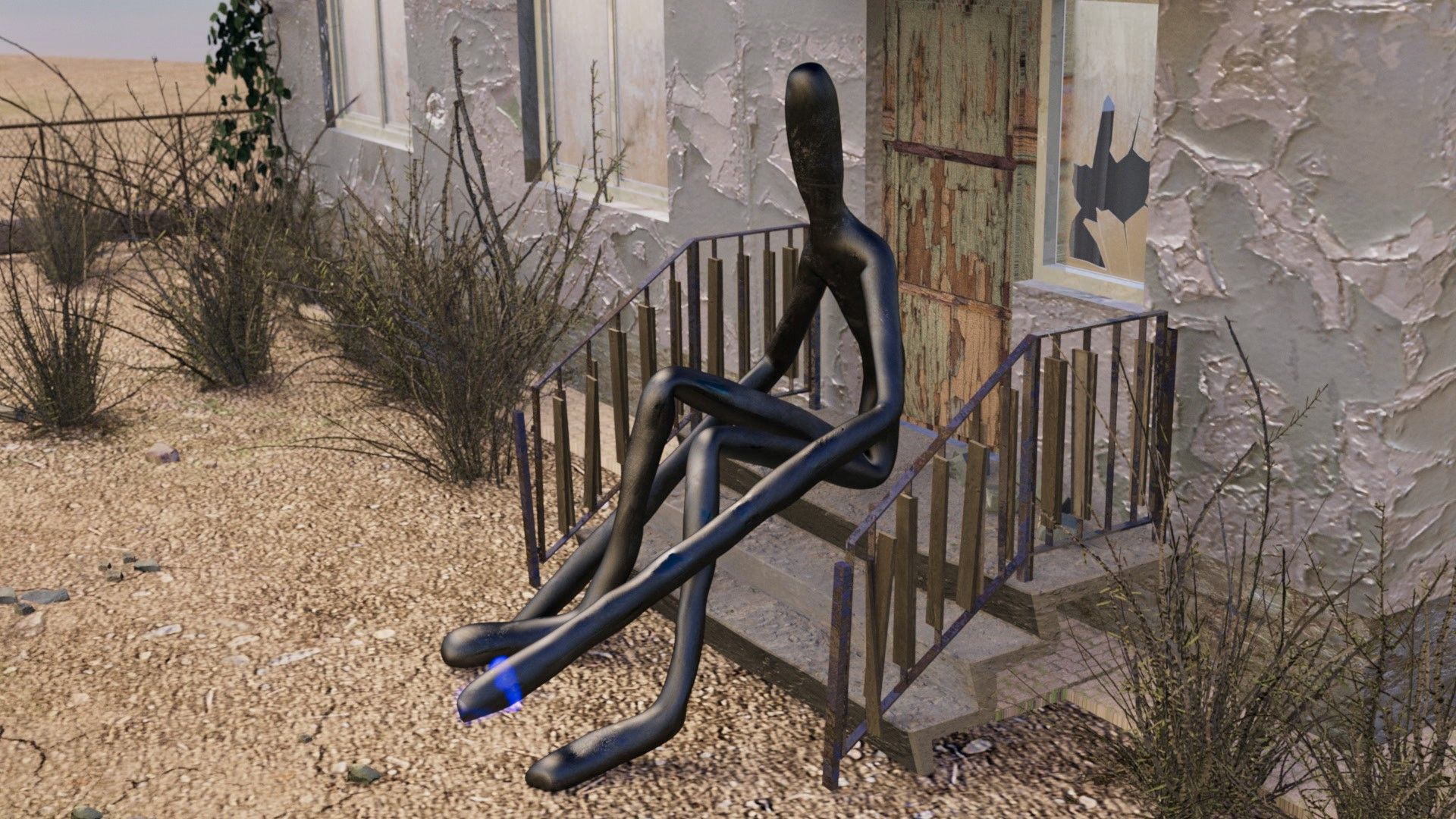
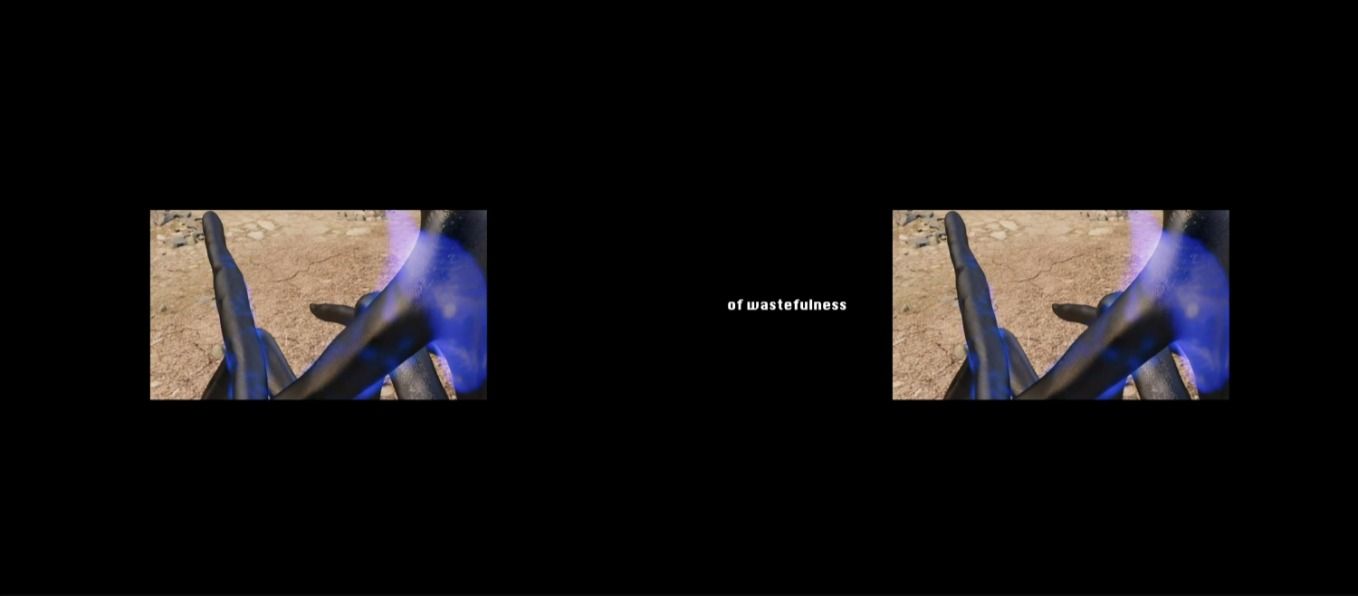
Images (20)
